Christie's to offer masterpieces from a Rothschild Collection
LONDON.- Telling the remarkable story of objects collected across centuries and treasured for generations, Christie’s will offer a landmark collection sale Masterpieces from a Rothschild Collection in London on 4 of July. Comprising approximately 57 lots each with exceptional provenance, this sale includes important European Furniture, Works of Art and Old Master Paintings, collected by members of the prominent Rothschild banking family, particularly by Baron Gustave de Rothschild (1829-1911), and housed in some of the family’s magnificent residences.
The sale captures the spirit of le goût Rothschild – the celebrated aesthetic that has influenced many European and American interiors since the 19th century – which follows the tradition of collecting at European Royal courts during the Renaissance, Baroque and Enlightenment periods. With estimates ranging from £10,000 to £2.5 million, select highlights will be on view in New York between 25 and 30 April and in Hong Kong from 24 to 27 May, followed by the London preview which opens to the public on 29 June.
Charles Cator, Deputy Chairman, Christie’s International: “The Rothschild name is synonymous with collecting at the very highest level, with many of the world’s greatest works of art having a Rothschild provenance. Their fabled name is added to the extraordinary roll call of illustrious owners of these masterpieces, so many of them Royal, from Louis XV and Marie Antoinette to William Beckford and Prince Demidoff. This sale is a celebration of connoisseurship and passionate collecting and we are very proud to have been entrusted with these masterpieces. With the great resonance of the Rothschild provenance among collectors and institutions this is an unparalleled opportunity, which marks a very special high point in my long career at Christie’s. It is thrilling to have the privilege of handling these supreme works.”
Highlights include:
FURNITURE WITH ROYAL PROVENANCE
The top lot of the sale, a pair of royal Flemish tortoiseshell, brass and pewter inlaid marquetry and giltwood cabinets, was commissioned in Antwerp circa 1713 for Philip V King of Spain, the second son of the Grand Dauphin and grandson of Louis XIV (estimate: £1.5 – 2.5 million). This highly important pair of cabinets on stand, inlaid with superb and precious marquetry panels in tortoiseshell and engraved metals, belongs to a group of four cabinets originally commissioned for Philip V King of Spain from the workshop of the celebrated Antwerp furniture-maker and dealer Henrick Van Soest (1659-after 1726), one of the most prestigious cabinet-makers of Flanders who worked in the great tradition of Netherlandish marquetry furniture.
Lot 50. A pair of royal tortoiseshell, brass, pewter, inlaid 'Boulle' marquetry and giltwood cabinets, attributed to Hendrik Van Soest, Antwerp, circa 1713. Estimate: GBP 1,500,000 - GBP 2,500,000 (USD 1,900,499 - USD 3,167,499). Unsold. © Christie's Images Ltd 2019.
Each with cornice centred with an arched cresting surmounted by a cartouche inlaid 'PV' below a closed crown headed by lions, flanked by putti also holding oval medallions with 'PV' below a closed crown, the cornice frieze and cresting inlaid overall in pewter and brass with elaborate military trophies among scrolling foliage and cornucopiae with two further 'PV' medallions, fitted with a central door inlaid on a tortoiseshell ground with a finely engraved portrait of Philip V seated in armour with a plethora of military accoutrements with Roman emblems and banners with the Garter below an angel holding a globe marked Cadiz, enclosing a mirrored architectural interior framed by eight drawers with moulded frames inlaid with scenes from military life and engagements, bordered with foliate surrounds framed by Corinthian columns with ormolu capitals, the sides inlaid in contre partie with arabesque patters in pewter on a rosewood ground, with deep coved frieze with ormolu plaque with military trophies and bound slaves framing a central silvered plaque with 'PV', supported by male caryatid figures with scrolled bases, the lobed stretcher of arc en arbalette outline inlaid in brass and pewter on an ebony ground with panels of stylised foliage on foliate turned feet, one with paper label apparently original inscribed in ink 'Alencorio No Me', another: 'No.1, inscribed in red '3107R', in black 'R218', 'Medaillers II III', in chalk 217C86, with a 'Chenue' depository label; the other with two paper labels apparently original: 'No.2', in black ink R218, in chalk R85 and C87 218
94.5 in. (240 cm.) high; 55.1 in. (140 cm.) wide; 20.9 in. (53 cm.) deep
94.1 in. (239 cm.) high; 55.5 in. (141 cm.) wide; 21.2 in. (54 cm.) deep
Provenance: Commissioned in Antwerp circa 1713 for Philip V King of Spain (1683-1746), second son of the Grand Dauphin and grandson of Louis XIV.
Recorded since the 18th century in the collection of the de l'Ecluse family, Belgium.
Jean-Baptiste de l'Ecluse (d. 1861), mayor of Ath.
Probably acquired by Baron Gustave de Rothschild (1829-1911), and by descent.
Literature: J. Bosmans, Les Cabinets de Philippe V d’Espagne, Louvain, 1885, 11 pages.
H. Havard, Dictionnaire de l’Ameublement, Paris, 1887-1890, t. III, p. 736, pl. 39.
Anonyme, ‘Scènes de la vie militaire sur les portes d’un meuble royal’, Connaissance des Arts, juin 1958, no.76, pp. 108-109.
Anonyme, ‘Deux meubles livrent leur histoire’, Connaissance des Arts, mars 1959, no.85, pp. 101-103.
Anonyme, ‘Scènes de la vie militaire sur les portes d’un Meuble Royal’, Jours de France, juillet 1960.
Y. Bottineau, L’Art de la Cour d’Espagne de Philippe V -1700-1746, Bordeaux, 1962, p. 240.
D. Cooper, Les grandes collections privées, éd. Pont-Royal, 1963, p. 179.
H.D. Molesworth, Meubles d’art, 544 chefs d’œuvre du XVIe au XXe siècles, Milan, 1969, ill.87.
G. Janneau, Le Mobilier français, Le Meuble d’ébénisterie, Paris 1974, p. 33, no.32.
R. Fabri, ‘De 17de-eeuwse Antwerpse Kunstkast Typologische en historische aspecten’, Verhan-delingen van de Koninklijke Academie voor Wetenschappen, Letteren en Schone Kunsten van Belgïe, Klasse der Schone Kunsten, no.53, Brussel, 1991, ill. p. 45.
R. Fabri, ‘L’occasion favorable de Henry Van Soest en 1716. Ou comment un ébéniste anversois tenta de duper ses collègues bruxellois’, Annales de la Société royale d’Archéologie de Bruxelles, tome 62, 1998, fig. 5, p. 182.
T. Wolvesperges, Le Meuble en Belgique, Meubelkunst in Belgïe, Belgian Furniture, 1500-1800, Bruxelles, 2000, pl. 45, pp. 148-149.
T.Wolvesperges, A highly important royal cabinet on stand by Van Soest, for Philippe V, King of Spain, Sotheby’s London, 30 October 2002, lot 75, pp. 156-167.
T. Wolvesperges, ‘Henry Van Soest, Marchand ébéniste anversois, Banquier et pourvoyeur de l’électeur de Bavière à Paris’, Académie royale d’archéologie de Belgique, in Revue belge d’archéologie et d’histoire de l’art, LXXIV, 2005, pp. 79-119.
Exhibited: 'Louis XIV, Faste & Décors', Musée des Arts décoratifs, May 1960, cat. 60-61, pl. XIII.
Note: This highly important pair of cabinets-on-stand belongs to a group of four cabinets commissioned by King Philip V of Spain (reigned 1701-1746) in Antwerp at the beginning of the 18th century from the workshop of Hendrick van Soest (1659-1726). An exceptional tour-de-force in the art of late Baroque marquetry furniture, they were commissioned to celebrate the victory of the new Bourbon king and his grandfather, Louis XIV, over the Habsburg claimant, Archduke Charles, in the War of the Spanish Succession (1701-1714). The cabinets are among the few last surviving examples of the distinctive type of Baroque cabinets produced in Antwerp at the turn of the 17th and 18th centuries, and arguably represent the most ambitious furniture ever manufactured in Flanders at that time. They were by family tradition acquired by Baron Gustave de Rothschild (1829-1911) from the collection of the de l'Ecluse family in Belgium.
THE GROUP
Van Soest produced a total of four cabinets for this foremost royal commission, the present pair in première-partie marquetry (with brass and pewter inlays on a tortoiseshell ground), and an identical pair in corresponding contre-partie marquetry (with tortoiseshell inlay on a metal ground). Two coats of arms symbolizing two different continents appear on the marquetry decoration of every cabinet in the group, each pair featuring the four continents (Europe and the Americas; Asia and Africa), in reference to Philip V’s new-gained Spanish Empire.
The cabinets in première-parite here offered, are the only two that remain as a pair, the pair in contre-parite having been split-up when auctioned in Brussels in 1944. One of the contre-partie cabinets is now in the collection of the Museum of Decorative Arts in Madrid; the other was sold at Sotheby’s, London 30 October 2002, lot 75, and remains in an important private collection (both illustrated).
The principal differences between the two pairs are in the design of the stands, and the additional carved giltwood side-wings found on the pair in contre-partie. The frieze on the cabinet’s stand on the pair in contre-partie features scrolling foliage, while the frieze of the pair in première-partie is decorated with a gilt-bronze cartouche medallion on a plain tortoiseshell ground.
By virtue of their conception in première-partie, the Rothschild cabinets should be considered as the richer pair in the group, the larger preponderance of tortoiseshell vis-à-vis metal representing a higher cost. For example, pieces by Andre Charles Boulle in première-partie cost approximately fifty percent more than pieces in contre-parite. What is more, furniture in première-partie, with pewter and brass inlaid decoration, could be worked with greater detail – metal being more easily engraved than tortoiseshell – thus achieving a higher degree of realism and sophistication, as evidenced by the present pair.
THE UNIQUE DESIGN & ICONOGRAPHY
In their overall form and exceptional marquetry design, the present cabinets exude a certain Parisian spirit, leading several authors to erroneously suggest they were of French origin, perhaps even the work of André-Charles Boulle, ébéniste privilegé to Louis XIV. Boulle’s influence on our group of cabinets is nevertheless undeniable: the recessed central tabernacle, overflowing upper corners, and choice of terms for the stand, recalls his early cabinets in floral marquetry (see examples in the Wallace Collection and the Getty). Yet the style of production of these two leading European ébénistes is quite distinctive, and there is no doubt today that Van Soest is the author of these cabinets. The form of Van Soest’s cabinets retain the archaism typical of Antwerp, and his marquetry differs from Boulle’s in its penchant for narrative themes, which he typically derived from the Bible, mythology or secular tales such as those of ‘Reynart de Vos’ (from the Romance of Renart). By contrast, very few cabinets with narrative or allegorical panels are known to have been produced by Boulle, who favoured a design of scrolling foliage on his marquetry work.
Van Soest’s group of cabinets for Philip V were the first in Antwerp to follow a decorative scheme that directly depicted a contemporary historical event or (as in the present case) the life of a monarch and his military triumphs. The converging design of the cabinet draws the viewer’s attention to the central marquetry panel, which depicts Philip V in majesty, with two chained prisoners at his feet, against a background of radiating military trophies. The prisoner on the left, with an eagle-headed helmet (a Habsburg emblem), could symbolize the Holy Roman Empire, the prisoner on the right, their Dutch allies. The figure of the king relates to a portrait by Vivian engraved by C. Vermeulen in 1701. The young king is depicted in three-quarter profile with the same youthful appearance, bearing the order of the Golden Fleece and with armour, and holding a sceptre in his hand. Above him a renomée playing the hunting horn carries a terrestrial globe on her knees bearing the words Spain and Madrid. On the pediment, an allegory of War is flanked by trophies and music-playing putti inlaid in mother-of-pearl. The bases of the mother-of-pearl columns are also decorated with bust of Philip V.
On each side, eight metal marquetry panels illustrate on the drawers various unidentifiable battle scenes and city sieges. These scenes are thought to relate to engravings by Van der Muelen who is also credited with painting some of the most important battles of Louis XIV. Van Soest might have also found a model for these battle scenes in the engravings of Gaspard Bouttats, a personal friend who is known to have drawn views of Van Soest’s workshop. The difficulty in attributing the battle scenes of the cabinets to a specific artist or series can be explained by Van Soest’s ‘cut and paste’ technique, which would see him amalgamate details of different contemporary scenes in an ad hoc basis, as he was recorded doing on a group of furniture decorated with Chinoiserie scenes.
The superb tortoiseshell and engraved metal panels of the Rothschild cabinets are further enlivened by beautifully carved giltwood term supports, which are directly inspired by an engraving by Daniel Marot (1661-1752) dated to the last quarter of the seventeenth century (here illustrated). This superb quality of figures is rarely encountered on furniture made in Antwerp at that time, highlighting van Soest’s capacity to hire specialized craftsman to elevate his most important commissions to a new plane.
A ROYAL COMMISSION
The study of Van Soest’s archives provides us with valuable information regarding his royal commissions for the Spanish crown. Indeed, these record the shipment to Madrid in 1703 of several ‘four colour’ marquetry bureaux, amongst them a bureau with a tortoiseshell ground bearing ‘los tropheos de Rey Phillippo a las portillas’. Seven and maybe even eight pieces of furniture bearing the monogram of the young Philip V are also recorded in Van Soest’s workshop inventory of 1713, the very same year of the Treaty of Utrecht, which marked the end of the War of the Spanish Succession. We also find in the inventory ‘two large bureau cabinets bearing the monogram ’PV’, depicting his trip to Spain and featuring his portrait and the portrait of the Queen with five gilt vases on four pillars and two black wings’. The inventory also refers to two large bureaux bearing the armorial of Spain on a rosewood ground, and describes two others which could refer to the Rothschild examples:
- ‘Deux grands bureau de marqueterie representant la victoire de PV et son portrait’
- ‘…Tres grand cabinet triomphe de PV, a fonds d’ecaille… un grand pieds dores’. This inscription is unfortunately incomplete, as this manuscript is in a poor state of conservation and illegible in the pertinent place.
HENDRICK VAN SOEST (1659-1726)
Hendrick van Soest can be considered to be the last great representative of the marchand-ébénistes of Antwerp. He was the successor of the celebrated Forchoudt and Musson dynasties, who propagated Antwerp’s great tradition of marquetry furniture across Europe through their highly-successful branches in Vienna and Madrid. He never reached the same celebrity as his predecessors, partly due to the political troubles that followed the Austrian takeover of Spanish-dominated Flanders, but more significantly still, due to the financial woes that affected his leading patron, the Elector Maximilian I of Bavaria (1597-1651). The Prince’s setbacks caused him to default on payments to Van Soest which he enumerated at 2 million livres in his memoirs. This forced Van Soest to sell his Brussels and Antwerp shops in 1713, which provides a terminus post quiem for the making of the Rothschild cabinets.
COMPARATIVE EXAMPLES
A number of comparable cabinets by Van Soest are recorded in important public and private collections. These include:
- The cabinet-on-stand of Maximilian I of Bavaria (1597-1651), in the Munich Residenz. This impressive cabinet follows a similar design to the Rothschild pair: its base consists of two imposing giltwood caryatids, the crowned coat-of-arms of the Elector appears within a cartouche flanked by the figures of Hercules and Minerva, and the marquetry panels allude to the prince’s victory over the Turks.
- The cabinet-on-stand of the Archbishop-Elector of Trier, Johann Hugo von Orsbeck (1675-1711), known through its preparatory design (R. Fabri, Meubles d’apparat des Pays-bas méridionaux, 1989, p. 39-40). On eight spiraling legs, the iconography of this cabinet is derived from Biblical and secular sources. The central tabernacle represents an allegory of Monarchy resting on a terrestrial globe, symbolizing sovereignty. The semicircular pediment features the Elector's coat-of-arms surmounted by giltwood figures.
- The cabinet-on-stand of Prince Franz Karl of Auersperg (1660-1713), in the Hungarian National Museum, Budapest (Hedvig Szabolcsi, ‘A late seventeenth-century cabinet in Hungary’, The Burlington Magazine, June 1980, p. 432). Two panels decorate its central section: one depicting an allegory of Triumph, the other, the four continents. These are flanked by further panels depicting battle scenes, military trophies and Turkish prisoners.
- A cabinet-on-stand sold Christies, Monaco, 1 July 1995, lot 19, which features a central portico decorated with a more unusual military triumph consisting of a pyramid of soldiers playing music.
- The bureau from the Spoelberch de Lovenjoul collection (1830-1907), in the University Library of Leuven. The cabinet features the coat of arms of William III, Prince of Orange (1650-1702), alongside his famous motto ‘honi soit qui mal y pense’ and the coat-of-arms of the city of Namur. The central panel depicts an intricate triumph flanked by 8 drawers decorated with scenes from ‘the hunt of the elephant’, all surmounted by a giltwood pediment.
- The cabinet-on-stand in the Royal Collection at Windsor. Its size, giltwood elements and exquisite interior – in the form of a theatre adorned with twisted columns, mirrors, balustrades and a staircase that stands out on a parquetry floor of tortoiseshell and ivory – strongly recall the Rothschild pair.
Thibaut Wolvesperges.
Commissioned by Queen Marie Antoinette of France almost certainly for her Petit Trianon, a Louis XVI ormolu-mounted mahogany table à écrire, circa 1785, is by Jean-Henri Riesener, the Queen’s favoured cabinet-maker (estimate: £600,000-1,000,000). Notably, the table is marked with Marie Antoinette’s garde-meuble brand which was applied to her personal furniture after 1784.
Lot 20. A Royal Louis XVI ormolu-mounted mahogany, ebony and fruitwood table à écrire by Jean-Henri Riesener, circa 1785. Estimate GBP 400,000 - GBP 600,000 (USD 506,400 - USD 759,600). Price realised GBP 1,091,250. © Christie's Images Ltd 2019.
The rectangular top lined with a brown leather writing surface within a three quarter pierced gallery, above a frieze drawer with pierced fluted frieze cast with leaves and flowers centred with a pierced scrolling foliage panel on each side, on squared tapering legs mounted with spiralling stringing and terminating with foliate cast sabots, joined by a shaped undertier; branded to the underside with the circular mark of the 'Garde-Meuble de la Reine', with a crowned 'C.T'; 30 in. (76.2 cm.) high; 31.¾ in. (80.6 cm.) wide; 19 in. (48.3 cm.) deep.
Provenance: Supplied to Queen Marie-Antoinette circa 1785, almost certainly for the Petit Trianon.
Rothschild collection.
Literature: D. Cooper ed., Les grandes collections privées, Paris, 1963, p. 172, illustrated on the front cover.
Note: Jean-Henri Riesener, appointed ébéniste ordinaire du mobilier de la Couronne in 1774, maître in 1768.
This Royal mahogany table à écrire of superb elegant proportion and enriched with jewel-like ormolu mounts, bears the brand ‘Garde-Meuble de la Reine’ and ‘C.T.’ indicating it was commissioned by Queen Marie-Antoinette of France (1755-1793) for her personal domain of the Petit Trianon.
THE GARDE-MEUBLE DE LA REINE
The circular marque au feu with interlaced monogram ‘MA’, set within the circular brand ‘GARDE MEUBLE DE LA REINE’, was used for the personal Garde-Meuble of the Queen Marie-Antoinette from 1784, managed under the direction of Pierre-Charles Bonnefoy du Plan (1732-1824). Intendant de la Reine and concierge of the Trianon domain, Bonnefoy du Plan not only controlled the furniture’s movement but served as the main intermediary between the Queen and designers and craftsmen.
This institution was in charge of the furnishing of the Queen’s private apartments, which already existed under the reign of Queen Marie Lesczynska, Louis XV’s wife, but was at that time used very parsimoniously, the Garde-Meuble de la Couronne being responsible for the main commissions. In 1784, taking advantage of the departure of Pierre Elisabeth de Fontanieu (1731-1784), director of the Garde-Meuble de la Couronne, Marie-Antoinette frantically developed the Garde-Meuble de la Reine allowing her a greater independence vis-a-vis the Crown’s institution and more control over her luxurious commissions. The creative process of her furniture was indeed submitted to her, ranging from the preparatory drawings to the models (sometime full-scale) of the pieces or to details of carving. An exigence, which was noted in the Souvenirs of her sister-in-law the Comtesse de Provence: ‘La Reine a une bonne qualité, quand elle veut une chose elle ne la quitte point’.
The independence of her personal Garde-Meuble also permitted her a greater freedom in the selection of the craftsmen involved in the commissions, and to keep her favourite cabinet-maker Jean-Henri Riesener (1734-1806) despite his disgrace in 1784. The newly appointed Intendant du Garde-Meuble de la Couronne Thierry de Ville-d’Avray (1732-1792) profoundly reformed the institution and replaced the official ébéniste de la Couronne Riesener by Guillaume Benneman, as the former was considered too expensive. Through her garde-meuble, Marie-Antoinette continued this collaboration during which Riesener’s most important pieces were produced. The present table is a fascinating testimony of this fruitful and longstanding relationship.
THE PETIT TRIANON
The Petit Trianon was built on the site of a botanical garden developed about a decade earlier by Louis XV, within the grounds of the Grand Trianon, Louis XIV's retreat, southeast of the château de Versailles. It was designed by Ange-Jacques Gabriel by the order of Louis XV for his long-term mistress, Madame de Pompadour, and was constructed between 1762 and 1768. Madame de Pompadour died four years before its completion, and the Petit Trianon was subsequently occupied by her successor, Madame du Barry. Upon Louis XVI’s accession to the throne in 1774, the 20-year-old King gave the château and its surrounding park to his 19-year-old Queen Marie Antoinette for her exclusive use and enjoyment. At the eve of the Revolution, Bonnefoy du Plan possibly destroyed a large part of the Queen’s archives in order to conceal her extraordinary expenses from the Tribunal Révolutionnaire or, more likely these were ceased by the revolutionaries as mentioned in a report dated 1793.
The crowned brand ‘CT’ for château de Trianon, visible on the present desk, was branded or painted on pieces which entered the Petit Trianon, then known as château de Trianon. The absence of an inventory or journal of the furnishing of the château does not allow a precise location of the table in the Domain, but the outstanding quality of the mahogany and superbly chased and gilded ormolu mounts suggest it was delivered for Queen Marie-Antoinette’s own use or for an apartment in the Petit Trianon of a close relative. In any case, with its undertier, the present table would have been tailored by the Queen to serve a very specific purpose. Approximately twenty-five pieces branded ‘CT’ and ‘Garde-Meuble de la Reine’ are known, seven of them desks:
- the magnificent marquetry writing-table by Riesener delivered through the official Garde-Meuble de la couronne in 1780 for the Queen at the Trianon and later marked with the Queen’s personal garde-meuble brand, subsequently in the collection of the Dukes of Hamilton and acquired by Baron Ferdinand de Rothschild, now at Waddesdon Manor (W1/38/1).
- a mahogany table delivered in 1777 by the Garde-Meuble de la couronnefor the cabinet d’entresol de la dame d’honneur de la Reine, sold at Sotheby’s, Monaco, 23 June 1985 lot 770 and and Christie’s London, 7 July 2011, lot 45.
- a parquetry table by Riesener delivered in 1782 for the Duchess of Polignac’s apartment at Petit Trianon, sold at M° Beaussant-Lefèvre, Paris, 28 June 2000, lot 161, acquired by the musée du château de Versailles.
- a marquetry table and a secrétaire à abattant by Riesener delivered in 1777 for the cabinet of Louis XVI at Petit Trianon, subsequently in the collections of the Dukes of Hamilton and acquired by baron Ferdinand de Rothschild, now at Waddesdon Manor (W1/38/2 and W1/25/6).
- a mahogany and trellis parquetry table sold at Ader, Paris, 18 March 1980, acquired by the musée du château de Versailles in 1999.
- a mahogany, bois satiné and marquetry table delivered in 1784 for Madame Elisabeth’s apartment at Petit Trianon (now at the musée du château de Versailles, inv. num. V5288).
Most of these pieces were marked with an inventory number probably applied as part of an inventory, now lost. The absence of such numbers on the present table would suggest it is a delivery made after this inventory was compiled. The absence of the official Garde-Meuble de la Couronne's numbering also demonstrates it was delivered after 1784 when Marie-Antoinette’s brand was created.
One of the rare late 18th century surviving documents regarding the furnishings of the Petit Trianon during the reign of Marie-Antoinette is a bill of the ébéniste ‘Paquet’ from Versailles, which lists some repairs he undertook on fourteen writing desks in the Petit Trianon (Archives nationales, O1 3629):
n°10 avoir raclé et repoli une commode et une table à écrire…
N°11. Raclé et repoli une table à double dessus et une table à écrire
N°12. Raclé raboté une table à écrire, une commode
Chez madame roialle dans l’antichambre rétabli deux tables à écrire, une commode …une petite table à écrire…
N°13. Rétabli une grande table de placage… et une table à écrire..
Cabinet du roi : un grand bureau à table, une table à écrire … antichambre : une table à écrire une commode, le tout raclé et mis à neuf.
Chez la reine : raclé et poli 3 commodes, donné du jeu au tiroir d’une table chinoise ; l’antichambre : 2 tables à écrire et une commode, le tout poli et mis à neuf.’
The table mentioned under no. 11 with ‘double tops’ might refer to the Rothschild desk, the undertier could be considered as a ‘second dessus’.
A ROYAL MODEL
The Rothschild Petit Trianon table à écrire, with its sober architectural lines enhanced with superb gilt-bronze mounts closely relates to a group of writing desks of similar overall form with tripartite frieze-drawers, all delivered by Riesener to members of the French Royal family, mainly Marie-Antoinette. In chronological order, these are:
- the marquetry writing desk mentioned above, delivered by Riesener in 1777 for the cabinet of Louis XVI at Trianon, with identical scrolling foliage mounts to the sides and identical spiral stringing to the edges (Waddesdon Manor, inv. no. W1/38/2, illustrated).
- the mahogany and marquetry writing desk delivered for the Pièce des bains of Madame Elisabeth at Versailles in 1778, with identical scrolling foliage mounts to the sides (now at Waddesdon Manor, acc. num. 2528)
- the mahogany, bois satiné and marquetry table delivered in 1781 for Marie-Antoinette at Compiègne (now at Waddesdon Manor, inv. no. W1/20/8).
- the mahogany and marquetry table delivered to Marie-Antionette for her cabinet de la Reine at the château de Marly in 1781 (now at the Gulbenkian Museum, Lisbon).
- the more sober kingwood veneered writing desk delivered in 1781 for Marie-Antoinette at the château de la Muette, sold from the Beistegui collection at Christie’s, Paris, 10 September 2018, lot 14 (illustrated).
- the mahogany writing desk delivered in 1783 for Marie-Antoinette at Marly with some identical mounts to the frieze, legs and sabots (now at Philadelphia Museum of Art, acc. num. 1939-41-8).
- the mahogany writing desk delivered in 1784 for Marie-Antoinette’s cabinet intérieur in the Tuileries, with similar fluted frieze, and mounts to legs and sabots (now at the National Gallery of Art, Washington, illustrated).
- the mahogany, bois satiné and marquetry table delivered in 1784 for Madame Elisabeth’s apartment at Trianon with similar mounts to frieze and legs (now at the musée du château de Versailles, inv. num. V5288).
The extremely finely chased fluted frieze to the present writing desk seems unique and indicates the importance of this commission despite its sober appearance. The alternated three different types of sprays of flowers are characteristic of Marie-Antoinette’s taste for nature which became a style in its own right.
Further lots with Royal provenance include a sundial by Julien Le Roy (1686-1759) which is thought to have been commissioned by King Louis XV of France (1710-1774) (estimate: £60,000-80,000).
Lot 13. A Royal Louis XV brass inclining mechanical minute dial by Julien Le Roy (1686-1759). Estimate GBP 60,000 - GBP 80,000 (USD 75,960 - USD 101,280). Price realised GBP 1,811,250. © Christie's Images Ltd 2019.
The silvered base plate with brass bun foot and two screw feet, two bubbles levels and graduated latitude arc; the inclining plate with silvered hour scale VII-XII-V signed Julien Le Roy aux Galleries Du Louvres with table of latitudes for 22 cities, the minute dial a geared Vernier 6-1 for tens of minutes and 0-9 for minutes on wheel, a sighted gnomon with rest for when folded; housed in green felt lined case bound in red morocco with gilt tooling, the top panel with arms of Louis XV (Olivier Fer 2495, 16). 8 in. (20.5 cm.) long; 7 in. (17.5 cm.) wide; 3 in. (8 cm.) deep.
Provenance: Almost certainly commissioned for King Louis XV of France (1710-1774).
Rothschild collection.
Note: Julien Le Roy (1686-1759) was born in Tours and by the age of thirteen had already made his first clock. By the age of seventeen he was established as apprentice to Le Bon in Paris, where he was so quick and adept at his work that he made and finished a repeating watch in just eight days. Shortly after he had attained his Mastership he was given the Directorship of the French Société des Arts. In 1739 he was appointment Horloger Ordinaire du Roi in 1739. His inventions included turret clocks, equation clocks and pull repeat mechanisms. An innovative clockmaker, he worked closely with the two finest French instrument-makers of the time, Lemaire and Langlois.
The mechanical minute dial solves the problem that most portable sundials cannot achieve an accuracy of better than a quarter of an hour. By using a sighting device rather than a gnomon, a geared mechanism can amplify the movements of the alidade so that a pointer can give the minute of the day. A sundial with a high level of accuracy such as this would have often been used to set a clock or watch to local solar time. A clock can keep the time, of course, but not find it; so the use of an accurate sundial is required.
Traditionally from the Spanish Royal family, and part of a very small group of luxurious 18th furniture incorporating Sèvres porcelain plaques is a Louis XVI ormolu, Sèvres porcelain and marquetry guéridon, circa 1782-83, by one of the most famous ébénistes of the late 18th century, Martin Carlin (estimate: £400,000-600,000). Acquired by Baron Gustave de Rothschild, this lot is closely related to a guéridon in the Frick collection.
Lot 18. A Louis XVI ormolu-mounted Sèvres porcelain, mahogany and sycamore marquetry gueridon by Martin Carlin, circa 1782-83, probably supplied by Dominique Daguerre, The upper porcelain plaque with blue interlaced LL mark enclosing date letter EE for 1782, painter's mark for Jean-Baptiste Tandart and gilder's mark for Jean Le Chauvaux in gold. Estimate GBP 400,000 - GBP 600,000 (USD 506,400 - USD 759,600). Price realised GBP 551,250. © Christie's Images Ltd 2019.
The circular galleried top with a plaque painted with a ribbon-tied basket of flowers on a white ground within a fond pointillé blue border, above a rosette trellis marquetry frieze with a blue silk-lined drawer, on ormolu tripod base with mille-raies panels cast with foliage joined by a circular galleried undertier with a plaque painted with a ribbon-tied trophy emblematic of Love inscribed 'SEMPER ET IDEM' and 'OMNIA VINCIT AMOR' on scrolled feet and castors joined by a stretcher centred by a galleried rosette marquetry, stamped 'M.CARLIN' and 'JME', with label printed '1193' and Rothschild inventory number '1193R', with a depository 'Chenue' label 29 ½ in. (75 cm.) high; 14 ¾ in. (37.5 cm.) diameter.
Provenance: According to family tradition, a member of from the Spanish Royal family.
Baron Gustave de Rothschild (1829-1911), and by descent.
Literature: Furniture in The Frick Collection: French 18th- & 19th-Century Furniture (Pt. 2) & Gilt Bronzes. Volume VI. New York: The Frick Collection, 1992, pp. 41-50.
Note: Martin Carlin, maître in 1766.
With its delicately-painted soft-paste Sèvres porcelain plaques, fine mahogany and sycamore marquetry and unusual gilt-bronze supports, this jewel-like table by the celebrated ébéniste Martin Carlin is an incredibly rare example of the most luxurious and fashionable furniture of the Louis XVI period produced by the marchand-merciers, almost certainly by Dominique Daguerre. This gueridon was according to family tradition, acquired by Baron Gustave de Rothschild (1829-1911) from a member of from the Spanish Royal family.
The unusual gilt-bronze supports of this gueridon or table chiffonièreclosely relate to those found on a gueridon now at the Frick Collection, New York (Acc. Num. 1918.5.61), which in turn corresponds almost exactly in form and decoration to a water-colour drawing in the Metropolitan Museum of Art, New York [see illustration]. The latter is inscribed 'Une jolie table ou chiffonnière a deux plateau de porcelain de France tous les ornements son ten bronze doré au mat sans aucun bois elle est de forme ovale' ; it was one of many provided by the marchand-mercier Daguerre to Duke Albert of Sachsen-Teschen and his wife Maria-Christina. As Charles Parker has convincingly argued, the highly-finished character of these drawings suggests they were made as 'sales material' for the dealers' clients rather than as working designs for an ébéniste (C. Parker et al., The Metropolitan Museum of Art Bulletin, May, 1960, p. 281 and F.J.B. Watson, The Wrightsman Collection, New York, 1966, vol. I, p. 284). This is further confirmed by an entry in the Mémoires of Marie-Christine of Sachsen Teschen in 1786, where she writes: 'Nous sommes allé voir au reste encore quelques uns des autres magasins d'ouvrages les plus remaquables alors en cette ville, comme ceux d'ébénisterie et de bronze de Mrs Arnault, D'Aguerre et Frost, celui de porcelaine de Japon et Lac des Indes d'un nommé Joulliot’ (see T. Wolversperges, 'Les achats parisiens de Charles-Alexandre de Lorraine (1712-1780)', in Collectionner dans les Flandres et la France du Nord au XVIIIe siècle, 2005, pp. 183-201). The present table shares with the Frick example related audacious gilt-bronze legs although the frieze and under stretcher are inlaid with dot-trellis parquetry, a feature characteristic of Carlin.
The ormolu supports cast with leaves and mille-raie motifs are also closely related to the uprights of a commode attributed to Martin Carlin, mounted with Sèvres porcelain plaques and chinoiserie-painted mirror panels, sold at Christie’s, London, 25 March 1971, lot 69. This commode, incorporating a variety of luxurious materials such as the present piece, is a typical assemblage of the marchand-mercier Daguerre.
DOMINIQUE DAGUERRE
The date of 1782 of the upper Sèvres porcelain plaque of the Rothschild guéridon clearly indicates a special commission of the marchand mercierDaguerre, the successor to Simon-Philippe Poirier, who in these years had a monopoly on the porcelain plaques from the Sèvres manufactory. At Carlin's death, Daguerre owed the ébéniste the very important sum of 3117 livres demonstrating a substantial collaboration.
Small tables or table en chiffonière mounted with Sèvres porcelain plaques were first developed in the rocaille style by Poirier in circa 1760 as a collaboration with ébénistes such as Bernard II van Risen Burgh, dit BVRB, and Roger Vandercruse, dit Lacroix. Neoclassical-shaped tables with circular Sèvres tops seem to have been invented in 1771, when the marchand-mercier Poirier acquired from the Manufacture Royale de Sèvres: ‘3 quarts de cercles 15l...45l’. The table for which those plaques was intended may be identified with that in the Metropolitan Museum which, exceptionally, displays plaques with the date letter for 1771 (illustrated in F.J.B. Watson, The Wrightsman Collection, Vol.III, New York, 1970, pp.52-4, no.297).
Daguerre continued to supply objéts de luxe in the latest fashion to the French Court and, increasingly during the 1780's, to the English nobility. Based first in the rue St. Honoré, Daguerre also opened a shop in Piccadilly, London, in the 1780s, to supply the Prince of Wales and his wealthy circle of collector friends, including the Duke of Bedford and Earl Spencer. Interestingly, Christie's held two sales, the first (anonymous but almost certainly comprising Daguerre's stock) on 15-17 March 1790 and the second on 25 March 1791, entitled ‘Superb Articles in French Or-Moulu...Imported from Paris by Mons. Daguerre’. These clearly demonstrate both the enduring popularity of porcelain-mounted furniture and Daguerre's attempts to dominate the English market. No less than three tables of similar general form are included. In the first sale, lot 84 was described as: ‘A ditto oval work table, with Sèvres porcelain top or-moulu border and mountings’. The second sale listed lot 39 as: ‘A lady's work table with porcelaine and or-moulu mountings, which was bought by a ‘Ld. C.’, which might refer to Charles Pratt, 1st Earl Camden (1714-1794).
THE SEVRES PORCELAIN
The reverse of the upper plaque is applied with a paper label printed with the interlaced LL mark of the Sèvres factory and inscribed with the price ‘216 [livres]’.
The Sèvres factory Sales Registers for end of year sales in 1782 record that thirty-three plaques were purchased by ‘M. Daguerre’, referring to the marchand-mercier Daguerre, at prices ranging from 12 to 336 livres each; among these is a single example sold for 216 livres. This figure is consistent with the value inscribed on the Sèvres factory price label applied to the underside of the upper plaque of this guéridon. Identifying either the upper or lower plaque in the Sèvres archives with certainty remains elusive, as detailed descriptions of the plaques are not included in the sales entries. However, the ‘plaque ronde’ of the upper tier is highly likely to be that fired on 21 November 1782, listed under the artists Tandart and Chauvaux in the register of the ‘Enfournements et défournements des peintures / Année 1782 à 1784’ (Vl' 36V°). In addition to the plaque sold to Daguerre, another single example is recorded in the Sale Registers for 11 January 1782 at a cost of 216 livres; this plaque was purchased by Pierre Denizot, an ébéniste and marchand-mercier, but no detailed description is recorded. Further plaques were purchased by Daguerre in 1783, including single examples at 216 livres each. It is possible that although produced in 1782, the upper plaque was amongst those recorded as purchased by Daguerre the following year.
The upper plaque bears the painter’s mark for Jean-Baptiste Tandart l’aîné, who specialised in flowers and was active at Sèvres from 1754 to 1800. It also bears the mark for Jean Chauvaux le jeune or cadet, a gilder and painter of patterns who was working at the factory from 1764-1800. The border decoration on the upper plaque was referred to in the factory records as fond pointillé, denoting a pale ground colour with small white circles outlined in dots in a darker enamel colour. It was chiefly in use in the late 1760s to the early 1780s and was sometimes called fond Taillandier, since the Taillandier family and particularly Geneviève Taillandier, were the main artists applying this decoration.
A work table (table à pupitre) by Carlin, mounted with five Sèvres plaques purchased by Daguerre from the factory in 1783, and painted in a very similar manner to the upper plaque of the present lot with baskets of flowers suspended from ribbons exists, see Rosalind Savill, The Wallace Collection: Catalogue of Sèvres Porcelain, London, 1988, Vol. II, pp. 887-892, C506, where the author mentions on p. 888 plaques sold to Daguerre (before the end of December 1783) for 216 livres each. A 1783 plaque, also decorated with a hanging basket of flowers (probably by Edme-François Bouilliat) is mounted in the closely related guéridon mentioned above, in the Frick Collection, New York. Closely related plaques of larger size and oval are on two secrétaires by Carlin, one in the Kress Collection of the Metropolitan Museum (the plaques dated 1773, see C.C. Dauterman et al., Decorative Art from the Samuel Kress Collection at the Metropolitan Museum, Aylesbury, 1964, p.145) and one in the Rothschild Collection, Waddesdon Manor, undated but with the same price labels as on this secretaire of 96 livres for the larger plaques and 80 livres for the smaller ones, which are dated in the catalogue to circa 1775 (see G. de Bellaigue, The James A. de Rothschild Collection at Waddesdon Manor, Fribourg, 1974, vol. I, pp. 342-7). Another table with a similar plaque probably painted by Edme-François Bouillia, stamped by Weisweiler, was sold at Christie's, London, 5 July 2012, lot 24; this corresponds almost exactly in form and decoration to another water-colour drawing from the 'Sachsen-Teschen album', now in the Metropolitan Museum of Art.
The lower plaque depicting a trophy emblematic of Love, inscribed 'SEMPER ET IDEM' and 'OMNIA VINCIT AMOR', is unmarked although undoubtedly from the same period as the upper plaque. It seems to be the only plaque known of this design and was therefore conceived for a specific commission, probably a diplomatic gift. Unlike the Frick example, the lower plaque is painted without a border, but framed by an ormolu moulding within a veneered border.
THE ROTHSCHILDS AND PORCELAIN-MOUNTED FURNITURE
In the collections of various members of the Rothschild family Louis XV and Louis XVI Sèvres-mounted furniture was among the most prized and highly valued of their works of art.
Interestingly, the earliest known piece of furniture mounted with Sèvres porcelain plaques, the so-called 'Mlle de Sens commode' of circa 1758-60,executed by Bernard II Van Risenburgh is among the fabled collections of the Rothschild family, until recently at hôtel Lambert in Paris (A. Pradère, Les Ébénistes Français, Paris, 1989, p. 197, fig, 189). Many other superb items of Sèvres-mounted furniture were collected by members of all the branches of this illustrious family, notably by Ferdinand de Rothschild (1839-1898), whose collections now at Waddesdon Manor are amongst the finest ensembles of French 18th-century decorative arts outside France (G. de Bellaigue, The James A. de Rothschild Collection at Waddesdon Manor, London, 1974, pp. 378-385, 428-429). Other extraordinary items of Sèvres-mounted furniture from the collection of Baronne Salomon de Rothschild were bequeathed to the Louvre and are illustrated in D. Alcouffe, Furniture Collections in the Louvre, Paris, 1993, pp. 171 & 228.
Baron Alphonse de Rothschild (1827-1905), brother of Baron Gustave, who probably acquired the present piece, seems to have been one the most passionate collector of Sèvres-mounted furniture pieces having reunited an unequalled ensemble of such pieces in the salon Rubens of his hôtel Saint-Florentin in Paris, including the commode by Carlin formerly in the collection of Madame de Laborde, sold at Christie’s, New York, 26 October 2001, lot 230 and a jewel coffer attributed to Carlin and stamped by his successor Gaspar Schneider, sold at Christie’s, New York, 2 November 2000, lot 200.
Acquired by Baron Gustave de Rothschild (1829-1911), the present gueridon was by family tradition privately bought from a member of the Royal Spanish family, and originally a gift from Louis XVI and Marie-Antoinette to the members of the Spanish Bourbon family. Interestingly, another gueridon also mounted with Sèvres porcelain plaques and with bronze supports, is known to have been a gift from Louis XVI to his cousin Maria Luisa of Parma (1751-1819), wife of Charles, Prince of Asturies, later King Charles IV of Spain and given by her to her lover Don Manuel Godoy. It was acquired from the latter by Baron Alphonse de Rothschild and it is therefore possible the present table has the same origin.
Other lots with notable links to leading institutions include a magnificent late Louis XV ormolu-mounted ebony and Japanese lacquer ensemble consisting of two commodes and a pair of encoignures by Bernard III van Risenburgh, son of the celebrated master known as BVRB. Conceived in a bold avant-gardist neo-classical style, the commodes from this group are closely related to the masterpiece by the same ébéniste now at the Metropolitan Museum of Art, New York. The group comprises three lots with a combined estimate of £1,500,000 to £2,500,000.
Lot 10. A late Louis XV ormolu-mounted Japanese lacquer and ebony commode by Bernard III van Risenburgh, circa 1763-1770, the lacquer late 17th century. Estimate GBP 600,000 - GBP 1,000,000 (USD 759,600 - USD 1,266,000). Price realised GBP 1,871,250. © Christie's Images Ltd 2019.
The commode with eared breakfront Portor marble top above a frieze with tied berried laurel branches, above three doors panelled with Japanese black and gold lacquer, the central panel depicting a children playing blind man's bluff in a palace garden, flanked by two narrower panels with buildings in mountain river landscapes, in a channelled matted frames with foliate clasps, the interior of the doors veneered with tulipwood framed by purpleheart, the sides similarly decorated with mountain landscape, the angles surmounted by bold foliate volutes chutes, above a plinth decorated with a gadrooned moulding, lozenges and roundels, centred by a zoomorphic mask apron, on acanthus scrolling feet; stamped 'B.V.R.B.' twice and 'JME' four times; with a small blue edged label inscribed 'N°1'; the back right sabot possibly an old replacement; 36 ¾ in. (93.5 cm.) high; 64 ¼ in. (163.5 cm.) wide; 23 ¼ in. (59 cm.) deep.
Provenance: Almost certainly commissioned for Armand-Frédéric-Ernest Nogaret (1734-1806),secrétaire du Roi and trésorier to comte d'Artois, his sale, Thierry & Langlier, Paris, 6 April 1807, lot 788, where acquired by
Dominique-Vincent Ramel de Nogaret (1760-1829), and by descent, from whom acquired by
Baron Baron Ludovic-Napoléon Lepic (1839-1889), his sale, Galerie Georges Petit, Paris, 18 June 1897, lot 44, where acquired by
Comtesse Jacques de Ganay (1851-1933).
Baron Maurice de Rothschild (1881-1957).
With Rosenberg and Stiebel, Inc., New York, 1958.
Rothschild collection.
Literature: Exposition Universelle de 1867 à Paris. Catalogue général, publié par la Commission impériale, Paris, E. Dentu, Paris, 1867, p. 459.
Exposition Universelle de 186 à Paris. Rapports du jury international publiés sous la direction de M. Michel Chevalier, ed. P. Dupont, Paris, 1868, p. 184.
S. de Ricci, Louis XVI Furniture, London, 1913, p. 191.
J.P. Baroli, 'Le mysterieux B.V.R.B enfin identifié', Connaissance des Arts, March, 1957.
D. Cooper, Les grandes collections privées, ed. Du Pont Royal, Paris, 1963, illustrated on the front cover.
D. Moore, M. Owens, In House, Random House Incorporated, New York, 2009, p. 103.
T. Wolvesperges, Le Meuble Français en Laque au XVIIIe Siècle, ed. de l'amateur, ed. Racine, Paris, 1999, pp. 202-203, 429, ill. 93-94.
Exhibited: Exposition Universelle, 1867, Paris.
Note: Bernard II van Risenburgh, maître in 1730.
These impressive and early neo-classical commodes and encoigures stamped BVRB are inlaid with Japanese lacquer panels of the highest quality and mounted with finely chased ‘goût grec’ ormolu mounts. United by Baron Maurice de Rothschild (1881-1957), they were part of special commissions by highly fastidious patrons, including the financier Armand-Fréderic Nogaret (1734-1806). They were almost certainly supplied by one of the foremost marchands-merciers, such as Simon-Philippe Poirier or François Darnault.
BERNARD III VAN RISENBURGH
The commodes and encoignures bear the stamp used by the famous Bernard II van Risenburgh (after 1696-c. 1766) and also by his son, Bernard III, who never became maître-ébéniste but worked on in his father's workshop when this was being managed by Bernard II's widow. In 1764, Bernard II, whose health was failing, sold his workshop to his son. Very little is known about Bernard III who seems to have had a short but brillant career as ébéniste. However, there are a number of very fine pieces in the neo-classical style bearing the stamp 'B.V.R.B' that are usually attributed to him. The present commodes and encoignures form a highly important addition to this small group of 'BVRB III' pieces.
LACQUER COMMODES BY BERNARD III VAN RISENBURGH
Included among the stock sold by Bernard II van Risenburgh to his son in 1764 were deux batis de commodes à l'Antique sur l'un desquels sont commencés à monter les cadres des portes et coté et les moulures du haut et bas en cuivre (T. Dell, Furniture in the Frick Collection, vol. I, New York 1992, p. 302). These are generally thought to have been of a neo-classical model that retains some curved features harking back to the earlier Louis XV style. A number of such pieces bearing Bernard van Risenburgh's stamp, all mounted with Japanese lacquer, are known, including an almost identical commode in the Kress Collection at the Metropolitan Museum of Art in New York (C.C. Dauterman a.o., Decorative art from the Samuel H. Kress Collection at the Metropolitan Museum, London, 1964, No. 10), a pair of smaller ones in the Frick Collection (Dell, op. cit., pp. 294-313). The ‘Westminster commode’, sold at Christie’s, London, 9 December 2004, lot 100, was executed in BVRB’s workshop in a more aggressive neo-classical appearance, with heavy swags and satyr masks, which would indicate it has a slightly later dating. They are generally attributed to BVRB III, although judging from the description in the stock inventory, their model had already begun to be produced while Bernard II was still involved with the workshop. Lacquer-mounted commodes in the rococo style had from the 1730s been among the father's most prized works. It is conceivable that the model for the Rothschild ensemble, which in its form retains some curved lines and scrolling feet but is basically dominated by straight lines and avant-gardist neo-classical appearance, had also been evolved by 1764. Other pieces stamped 'B.V.R.B.' mounted with lacquer panels and attributable to Bernard III are recorded: a pair of encoignures with yellow lacquer panels related to the present pair of encoignures was sold from the collection of Jacques Doucet, Galerie Georges Petit, Paris 7-8 June 1912, lot 322. Another pair of encoignures, conceived in a more neoclassical design with red Chinese lacquer is now at Versailles and was gifted by the Duchess of Windsor in 1973 (inv. V4987). They are en suite with a commode à vanteaux sold from the collection of Monsieur Claude Cartier, Sotheby’s, Monaco, 25 November 1979, lot 155. Without lacquer, a commode of the Westminster model is known, equally stamped by BVRB but veneered with marquetry (sold, Sotheby's, Monaco, 14 December 1996, lot 73). Veneered in ebony and attributable to BVRB III is a console in the Royal Collection (RCIN 35484) and a cartonnier formerly in the collection of Pierre-Victor, Baron de Besenval (1722-1725) and subsequently in the collection of Baron Gustave de Rothschild, sold from the Lambert Art Collection, Christie’s, London, 14 October 2015, lot 22.
THE ROLE OF THE MARCHANDS-MERCIERS
Japanese lacquer, especially of the superb quality found on the present commode, was so rare and costly that virtually no cabinet-maker was able to buy it himself in order to decorate his furniture. Instead, the powerful marchands-merciers, the class of dealers who were also responsible for the production of Sèvres-mounted furniture, acquired the lacquer and commissioned ébénistes to produce furniture that was veneered with it. Bernard II van Risenburgh is known to have made much of his lacquer-mounted furniture for the marchands-merciers Thomas-Joachim Hébert, Simon-Philippe Poirier and François Darnault.
The Rothschild ensemble as well as the other late commodes by BVRB., have a number of features in common with some of the celebrated lacquer-mounted commodes supplied by Poirier. In 1766, this dealer delivered a sumptuous piece by Joseph Baumhauer (d. 1772) to the Marquis de Marigny, Madame de Pompadour's brother and a great advocate of the new style, for 4000 livres (A. Pradère, Les ébénistes français de Louis XIV à la Révolution, Paris, fig. 240). It shares with the present commode the same tripartite curved front, the thick ormolu frames around the lacquer panels, the curved legs, identical apron to those of the present encoignure, but with a prominent Greek key frieze and satyr masks instead of the laurel leaf frieze on the Rothschild ensemble.
ARMAND FREDERIC NOGARET
Lots 10 and 11 from the present set were almost certainly commissioned for Armand-Frédéric-Ernest Nogaret (1736-1806), secrétaire du Roi andtrésorier to the comte d’Artois, brother of Louis XVI. Son of a wealthy leader of the gobelet du Roi in the Languedoc region, he first became premier commis to the duc de la Vrillière from 1753 to 1775. His lucrative position permitted him to buy a château and to collect important works of art from the most prized collections of his time such as from the Randon de Boisset sale. He also commissioned luxurious furniture in the latest fashion through marchands who supplied the comte d’Artois. At the time of his death on 5 July 1806, this great collector owed money to Avisse, who had delivered armchairs, and also to the bronziers Delafontaine and Petit, to the horloger Tavernier and to the marchand de curiosités Adoze. In his collection sale sold by Thierry & Langlier in Paris on the 6th April 1807 was listed an important group of furniture mounted with ormolu and Japanese lacquer including a commode and pair of encoignures en suite, a writing desk and a coffer (lot 788). Although very succinctly described it is possible to trace the successive provenance as they were bought in 1806 by the powerful Dominique-Vincent Ramel de Nogaret (1760-1829), formerly Minister of Finance under the Directoire. He purchased together with the present set a cartonnier (lot 789) which was described in his inventory after death with a clock ‘à L'enfant d'après Pigalle, nommé l'enfant à la cage’ and not mentioned in the catalogue as it had been specifically bequeathed to his protégé Dominique Vincent Ramel-Nogaret, heir to the deceased. It is probable that he bought the cartonnier to reunite it with the clock he inherited.
Based on the precise description of the cartonnier in Nogaret's inventory after death, this piece had been identified as the one sold at Christie’s, London, 4 July 1994, lot 270. Interestingly, this piece had identical diamond-shaped mounts to the feet and shares a similar ‘goût grec’ design such as the present, indicating they were probably part of the same commission. Although stamped Macret, the cartonnier might have been in fact made by BVRB III as it shares similar mounts and a distinctive avant-garde ‘goût grec’ design closely related to his oeuvre, such as the pair of encoignures by BVRB III now at Versailles (inv.V4987). Pierre Macret, in his capacity as marchand-ébéniste privilégié du Roi suivant la cour, would have subcontracted some of his commissions, a common practice for the prolific marchands.
The present commode and pair of encoignures resurfaced in the Exposition Universelle of 1867 in Paris where they were lent by Baron Ludovic-Napole´on Lepic (1839-1889), and presented in the Exposition Universelle’s catalogue with a Dominique-Vincent Ramel de Nogaret provenance. They were subsequently sold in Baron Lepic’s collection sale in 1897. The frontispiece of this sale catalogue indicates that Baron Lepic acquired privately and ‘en bloc’ a large part of his superb collection from the heirs of Dominique-Vincent Ramel de Nogaret, which was housed in his house in Montolieu, so-called ‘Le Petit Versailles’, because so much of the furniture and works of art in his residence were considered as magnificent.
In the 1897 sale, the set was purchased by the celebrated collector and socialite comtesse Jacques de Ganay (1851-1933), who would have in her turn sold it to Baron Maurice de Rothschild (1881-1957), who united the present set (lots 10-11) with the other almost identical commode (lot 12). The latest commode is probably the one described in the 1796 entry of the journal of the Palais Directorial (now Palais du Luxembourg), as below:
Rentré du Palais Directorial. Prairial An IV. N°156.
Une commode de lac fond noir, contournée sur le devant et sur les bouts, la devanture ouvrant à trois vantaux formant panneaux, encadrés d’une moulure de bronze unie, ainsi que les deux bouts, la frise ornée de guirlandes de laurier nouée de rubans, chutes en consoles sur les quatre montants des pieds, rosaces unis dans las cases, sabots à feuilles d’ornements, grosse moulure ciselée au pourtour du bas des panneaux, agrafes dans le milieu à muffle de lion et feuilles d’ornement, le tout de bronze doré, ladite à dessus de marbre griotte d’Italie, de 5 pieds de large, 22 pouces de profondeur et 34 e hauteur [92 cm. high; 162.5 cm. large; 59.4 cm. deep]. It is inscribed in the margin of the document: ‘29 Prairial an IV. Chez l’ambassadeur Batave’ indicating it might have been sent to the Ambassador of ‘Batave’, actual Holland.
Lot 12. A late Louis XV ormolu-mounted Japanese lacquer and ebony commode by Bernard III van Risenburgh, circa 1763-1770, the lacquer late 17th century. Estimate GBP 600,000 - GBP 1,000,000 (USD 759,600 - USD 1,266,000). Price realised GBP 1,391,250. © Christie's Images Ltd 2019.. Ltd 2019.
The commode with an eared breakfront Portor marble top above a frieze with tied berried laurel branches, above three doors panelled with Japanese black and gold lacquer, the central panel depicting elegant ladies in a lakeside pavilion and fishing men, flanked by two narrower panels with buildings in mountain river landscapes, in a channelled matted frames with foliate clasps, the interior of the doors veneered with bois satiné crossbanded and outlined with amaranth, the sides similarly decorated with mountain landscape, the angles surmounted by bold foliate volutes chutes, above a plinth decorated with a gadrooned moulding, lozenges and roundels, centred by a zoomorphic mask apron, on acanthus scrolling feet; stamped to the front right edge 'B.V.R.B.' once and 'JME' twice; the back with a deposit 'Chenue' label; some lozenge and roundel mounts to the lower frieze replaced; 36 ¾ in. (93.5 cm.) high; 64 in. (163.5 cm.) wide; 23 ½ in. (60 cm.) deep.
Provenance: Probably recorded in 1796 in the Palais Directorial (Palais du Luxembourg), Paris, and subsequently for the use of the Ambassador of Batavia (actual Netherlands).
Baron Maurice de Rothschild (1881-1957).
With Rosenberg and Stiebel, Inc., New York, 1958.
Rothschild collection.
J.Literature: P. Baroli, 'Le mysterieux B.V.R.B enfin identifié', Connaissance des Arts, March, 1957.
D. Cooper, Les grandes collections privées, ed. Du Pont Royal, Paris, 1963, p.170.
S. de Ricci, Louis XVI Furniture, London, 1913, p. 191.
C. Packer, Paris Furniture, Newport, 1956, fig. 72.
T. Wolvesperges, Le Meuble Français en Laque au XVIIIe Siècle, ed. de l'Amateur, ed. Racine, Paris, 1999, pp. 202-203, 429, ill. 93-94.
Lot 11. A pair of late Louis XV ormolu-mounted Japanese lacquer encoignures by Bernard III van Risenburgh, circa 1763-1770, the lacquer late 17th century. Estimate GBP 300,000 - GBP 500,000 (USD 379,800 - USD 633,000).Price realised GBP 311,250. © Christie's Images Ltd 2019.
Each encoignure with a break-out of a portor marble above a frieze with a lobster branch, above a door paneled with pavilions in a rocky mountain landscape, framed by frosted channeled borders, with foliate angles and berried finials, the interior of The Door Veneered with Tulipwood Crossbanded and Outlined in Purple Heart, The Angle Mounted with Bold Scrolled Volutes. each stamped 'BVRB' and 'JME' twice 37 ½ in. (95.5 cm. high; 31 in. (79 cm.) Wide; 22 in. (56 cm.) Deep.
Provenance: Almost certainly commissioned for Armand-Frédéric-Ernest Nogaret (1734-1806),secrétaire du Roi and trésorier to comte d'Artois, his sale, Thierry & Langlier, Paris, 6 April 1807, lot 788, where acquired by
Dominique-Vincent Ramel de Nogaret (1760-1829), and by descent, from whom acquired by
Baron Ludovic-Napoléon Lepic (1839-1889), his sale, Galerie Georges Petit, Paris, 18 June 1897, lot 45, where acquired by
Comtesse Jacques de Ganay (1851-1933).
Baron Maurice de Rothschild (1881-1957).
With Rosenberg and Stiebel, Inc., New York, 1958.
Rothschild collection.
Literature: Exposition Universelle de 1867 à Paris. Catalogue général, publié par la Commission impériale, Paris, E. Dentu, Paris, 1867, p. 459.
Exposition Universelle de 1867 à Paris. Rapports du jury international publiés sous la direction de M. Michel Chevalier, ed. P. Dupont, Paris, 1868, p. 184.
S. de Ricci, Louis XVI Furniture, London, 1913, p. 191.
J.P. Baroli, 'Le mysterieux B.V.R.B enfin identifié', Connaissance des Arts, March, 1957.
D. Cooper, Great private collections, Readers Union, 1965, ill. p. 170.
T. Wolvesperges, Le Meuble Français en Laque au XVIIIe Siècle, ed. de l'Amateur, ed. Racine, Paris, 1999, pp. 202-203, 429, ill. 93-94.
Exhibited: Exposition Universelle, 1867, Paris.
KUNSTKAMMER OBJECTS
A set of ten parcel-gilt polychrome square enamel plaques by Leonard Limousin, circa 1550, each depicting an apostle in a circular wreath and with an identifying banner, have an estimate of £200,000 to £300,000. Also acquired by Baron Gustave de Rothschild, ‘The Rothschild Apostles’ exemplify Limousin’s finest creations in his clear sense of colour and the lively and original compositions. Two of the plaques, of Saint Andrew and Saint Bartholomew, are signed ‘LL’. These plaques formed part of a larger set of sibyls, prophets and saints that adorned the antependium of an altar in the now-lost church of Santa Maria della Celestia in Venice. A number of the other plaques from the antependium, and also a liturgical lamp that hung above the altar, remained in the Rothschild family until recently; one is in the Correr Museum in Venice.
Lot 5. Léonard Limosin (circa 1505-1575/1577), circa 1540, A set of ten plaques of apostles; 5 1/8 x 5 1/8 in. (13 x 13 cm.) each. Estimate GBP 200,000 - GBP 300,000 (USD 253,200 - USD 379,800). Price realised GBP 323,250. © Christie's Images Ltd 2019.
Parcel-gilt polychrome enamel; each apostle in a circular wreath and with an identifying banner; three plaques signed with initials ‘LL’; each with paper label to the reverse inscribed either ‘2650’ or ‘2650 ER’; 5 1/8 x 5 1/8 in. (13 x 13 cm.) each.
Provenance: Possibly brought to Italy at the instigation of Jean de Langeac, Bishop of Limoges and French ambassador to Venice, Ferrara and Rome in the 1530s and 1540s.
Church of Santa Maria della Celeste, called La Celestia, Venice, from at least 1653 until circa 1810.
Benedictine abbey church of Monastier, near Treviso, from circa 1810 until 1875.
Sale in Venice, 1875.
With the antique dealer Ricchetti, in Venice.
Acquired by Baron Gustave de Rothschild (1829-1911), and by descent.
Literature: Varie venete, curiositá sacre e profane, Cod. Gradenigo Dolfin, Museo Civico Correr, Venice.
G. Mariacher, 'Di uno smalto limosino al museo Correr e di un disperso paliotto veneziano', in Bolletino dei Musei Civici Veneziani, 1958, no. 4, pp. 22-27.
P. Verdier, The Walters Art Gallery: Catalogue of the Painted Enamels of the Renaissance, Baltimore, 1967, nos. 83-103, pp. 163-4.
S. Baratte, Les Emaux Peints de Limoges, Paris, 2000.
V. Notin and F. Barbe, La Rencontre des Heros, Limoges, 2002, nos. 53, 54.
Note: Although few documents survive regarding the life and work of Leonard Limosin, he was perhaps the best known enameller of the French Renaissance. Two signed plaques of identical lozenge format to the present set of ten (now musée municipal de l’Evêché de Limoges, see Notin, loc. cit.) also bear the coat of arms of Jean de Langeac, the Bishop of Limoges, and it is believed that this influential prelate was responsible for introducing Limosin to the French court where his career flourished. He painted numerous enamel portraits of members of the French aristocracy, and in 1545 François I commissioned Limosin to produce a suite of 12 large enamelled plaques of the Apostles which are today at Chartres. In 1548 he was appointed Emailleur du Roi, and in 1553 he received a commission from Henri II for two enamel altarpieces each more than one metre in height representing the Crucifixion and the Resurrection for the Sainte-Chapelle, Paris (Baratte, op. cit., pp. 180-183). These are perhaps his most ambitious and best-known works.
The ten Rothschild Apostles exemplify Limosin’s finest creations in his clear sense of colour and the lively and original compositions. Three of the plaques, of SS Andrew, Bartholomew and Paul are signed ‘LL’. These ten plaques formed part of a larger set of sibyls, prophets and saints that adorned the antependium of an altar and a liturgical lamp that hung above it in the now-lost church of Santa Maria della Celestia in Venice, where they had been since at least the mid-17th century. A watercolour of the antependium by Jan II Grevenbroek (1731-1807) survives in the Correr Museum, showing the original placement of the Rothschild enamels. Grevenbroek's caption for both this drawing and that of the lamp suggest that he was referring to church inventories dated 1653 which include the antependium. The fact that there are only 10 apostles would suggest that there may have been an existing - incomplete - set of enamels that was incorporated into a newly created antependium in the middle of the 17th century.
In 1810, the church, which formed part of a convent, was closed by Napoleon and the antependium and liturgical lamp were both moved to the Benedictine abbey church of Monastier, near Treviso. In 1875 they were sold to the antique dealer Ricchetti and then acquired by Baron Gustave de Rothschild. The ten lozenge-shaped enamels offered here, and twenty rectangular plaques from the antependium and lamp remained in the Rothschild collections, and the rectangular plaques were later sold at auction (Couturier and de Nicolay, Paris, 29 March 2000, lot 95). Of the original set from the Celestia, the twenty plaques in the above-mentioned sale were acquired by the Musée nationale de la Renaissance, Château d’Ecouen, one is in the Correr museum in Venice and at least three are unlocated. Another related set of rectangular plaques depicting sybils and prophets is in the Walters Art Gallery, Baltimore (see Verdier, loc. cit.).
It is not known how the enamels of the Celestia made their way from France to Venice, but it has been suggested that it may have been at the instigation of Jean de Langeac, Bishop of Limoges (d. 1541). De Langeac was a member of an aristocratic family from the Auvergne region. Born as the second son, he studied in Paris and then entered the church. He accumulated a number of ecclesiastical benefices and became a confidant of François I, being named to the king's Grand Conseil in 1516. He held important positions in the Royal Household and acted as a diplomat on numerous occasions including to Venice in 1530, to Ferrara in 1533 and to Rome in 1540. Although no conclusive evidence has yet surfaced, de Langeac was an important patron himself, and as a representative of the king it is entirely possible that the enamels were a diplomatic gift. Considering the subject matter, it seems likely that they were always intended to go in a religious setting so it is possible that they were given directly to the Catholic church. However it is also possible that they were originally given to a private individual for a private chapel and were donated to the Celestia sometime before 1653.
An important German silver-gilt double-cup, mark of Hans Beutmuller, Nuremberg, 1594-1602, was in the collections of both Baron Mayer Carl von Rothschild and Baroness James de Rothschild (estimate: £200,000-300,000). It is in the Gothic style revived in Nuremberg by Hans Petzold (1551-1633) at the end of the 16th century. Hans Beutmüller (1588-1622) worked with Petzold and ranked, in his own right, amongst the most reputable Nuremberg goldsmiths.
Lot 7. A German silver-gilt double-cup, mark of Hans Beutmuller, Nuremberg, 1594-1602; each 9 1/8 in. (24 cm.) high; overall height 17 ¾ in. (45.2 cm.) 45 oz. 17 dwt. (1,427 gr.) . Estimate GBP 200,000 - GBP 300,000 (USD 253,200 - USD 379,800). Price realised GBP 395,250. © Christie's Images Ltd 2019.
Of Gothic revival form, each cup on lobed octafoil foot, the fluted stem with applied openwork foliate scroll brackets, the bowls chased with lobes and fluting, and applied below the rim with openwork foliage and flower buds under a ropework band, the broad border engraved with a rabbit, bear, dogs, scrolling flowers, foliage and fruit, each cup set underneath the base with a circular medal cast with inscription partially legible on one 'RUDOLPHU. G. ROM. IMP. AUGU' and on the other 'WOL. NICOI. GRUENTALLER [sic.]', marked on rim and foot of each cup, and with later Dutch tax mark on rim. The bust portrait on the medallions are those of Emperor Rudolph II (1576-1612) and Wolfgang Nicolaus Grünthaler zu Kremsegg (1565-1630) depicted at the age of 34.
Provenance: Wolfgang Nicolaus Grünthaler zu Kremsegg (1565-1630).
Baron Mayer Carl von Rothschild (1820-1886), Frankfurt, by decent to,
Baroness James Edouard de Rothschild (1847-1931),
Rothschild collection.
Literature: A. E. Jones, Objects in Gold & Silver And Limoges Enamels in the Collection of the Baroness James de Rothschild, London, 1912, p. 78, plate XL.
A GIFT OF BARON MAYER CARL VON ROTHSCHILD
These double-cups became very sought after in the 19th century being seen as perfect examples of German Renaissance silversmithing. As such they were avidly collected by the Rothschild family, especially by Baron Mayer Carl von Rothschild (1820-1886) who owned several including one of the oldest known, now in the collection of the Musée National de la Renaissance, Château d’Ecouen (illustrated in M. Bimbenet-Privat and A. Kugel, Chefs d’Oeuvre d’Orfèvrerie Allemande Renaissance et Baroque, Dijon, 2017, p. 83).
Beutmüller’s double-cup was bequeathed by Mayer Carl to his daughter Laura Thérèse (1847-1931) who married Nathan James Edouard (1844-1881), also an avid enlightened collector. James Edouard ‘hunted’ only for the best works of arts to furnish his home, l’hôtel Tolstoï on avenue de Friedland, Paris. Mayer Carl von Rothschild had himself built, over forty years, a Goldschatz in his Frankfurt palace on Untermainkain, which comprised over 5,000 precious metalwork objects dating from the late Gothic to the Baroque period.
HANS PETZOLT'S GOTHIC REVIVAL
This important double-cup is in the Gothic style, which was revived in Nuremberg by the goldsmith Hans Petzolt (1551-1633) towards the end of the 16th century. Double-cups first appeared in the 15th century serving as ceremonial gifts used for important diplomatic and trading negotiations, but also as wedding gifts; in the latter case, they were either fitted with medallions featuring the coats-of-arms of the couple or engraved with male and female virtues. Hans Petzolt was a prolific maker. Between 1595 and 1616, he produced a total of sixty-four lobed cups and eighteen pineapple cups for presentation by the Nuremberg city council to visiting dignitaries, as recorded in the city archives. He also worked for the Emperor Rudolph II in Prague. Several other leading Nuremberg makers, contemporaries of Petzolt, embraced this Gothic revival style including amongst others Hans Kellner, Christoph Jamnizter and Hans Beutmüller (1588-1622). Beutmüller is believed to have trained in Venice before moving to Nuremberg where he became master in 1588. In 1620 he is recorded as working with Hans Petzolt for the Heilig Geist Spital (The Hospital of the Holy Spirit), proving a work connection between the two men.
Beutmüller and his brother Caspar ranked amongst the most highly regarded Nuremberg goldsmiths. Marc Rosenberg (Der Goldschmiede Merkzeichen, Frankfurt, 1925, p. 148, no. 4055) records four other similar double-cups dated 1600 by Beutmüller; another identical double-cup dated 1603-1609 is now in the Sir Arthur and Rosalinde Gilbert Collection at the Victoria and Albert Museum (inv. 948-1907). It measures 45.5 cm. high and weighs 1,500 gr., but is parcel-gilt with silver applied ornaments. Similarly Beutmüller's brother Caspar also made several identical double-cups, such as lot 24 in the sale of the collection of Baron Carl Mayer de Rothschild, Paris, June, 12-13 June 1911.
WOLFGANG NICOLAUS GRÜNTHALER ZU KREMSEGG
The son of Wolfgang Grünthaler (1502-1576), a Habsburg administrator who had been ennobled in 1535, Wolfgang the younger (1565-1630) was the twentieth child in a family that would eventually include twenty-five children. Wolfgang senior had served on a number of councils administrating mining concerns and the minting of money in Bohemia. He also held a position of responsibility relating to the administration of coinage in Linz. Joseph F. Patrouch in his book A Negotiated Settlement: The Counter-Reformation in Upper Austria Under the Habsburgs, Boston, 2000, p. 64 records the father's achievements. His career began in the service of a Spanish nobleman, Gabriel de Salamanca, Count of Ortenburg. An advantageous marriage to Anna Enenklin (d.1553), an Innsbruck noblewoman, inheritance from his family and his service as a councillor to the Emperor enabled him to purchase the castles of Kremsegg, Ottsdorf and Dietach in the area between Wels and Kremsmünster in northern Austria. He was sympathetic to Lutheran teachings which led to some friction with the Abbot of Kremsmünster, however Wolfgang senior was buried in the abbey church of Kremsmünster in 1576.
Wolfgang the younger was educated at Tübingen University and was registered at the north Italian universities of Padua, Sienna and Bologna between 1585 and 1587. He married Apollonia von Oedt (1574-1621) in 1592. He fought for Emperor Rudolf II against the Turkish forces in Hungary. His and his brothers' service was recognised by their elevation in the ranks of the Austrian nobility. He served as councillor to Emperor Ferdinand II. Between 1625 and 1626 he was involved in the suppression of the Upper Austrian peasant uprising. He was captured and temporarily imprisoned with Abbot Ignaz Krafft, Karl von Fuchs and the rector of the University of Vienna Martin Hafner Grünthal in Castle Steyr, during the insurgency. They were freed by General Gottfried Heinrich zu Pappenheim (1594-1632).
A Venetian rectangular parcel-gilt, gilt-bronze and rock crystal casket, circa 1600 belonged to the renowned collector and author William Beckford in the early 19th century (estimate: £100,000- 150,000). With the precious use of rock crystal and Islamic-inspired lacquer decoration it is obvious why it would have appealed to Beckford. When this casket was sold in the celebrated Fonthill Abbey sale of 1823, it was said to have come from the collection of Pope Paul V Borghese, who could have commissioned it himself. The casket was purchased at the Fonthill sale by an agent on behalf of the 2nd Earl Grosvenor.
Lot 14. Venetian, circa 1600. A parcel-gilt, gilt-bronze and rock crystal casket; 15 3/8 in. (39.2 cm.) Wide; 11 ½ in. (29.5 cm.) High; 11 1/3 in. (28.7 cm.) Deep. Estimate GBP 100,000 - GBP 150,000 (USD 126,600 - USD 189,900).Price realised GBP 731,250. © Christie's Images Ltd 2019.
Inset overall with rock crystal cabochons and panels; the hinged lid opening to reveal a later and probably English silk-covered mahogany loose base; the sides embellished with pairs of spiral rock crystal columns with Corinthian capitals, on six gilt-wood feet; the underside with paper label inscribed ‘Art Treasures Exhibition/ WREXHAM, 1876./ D. of Westminster/ Eaton Hall Proprietor.’
Provenance: Traditionally Pope Paul V Borghese (1550-1621), with an identical pendant casket.
William Beckford (1760-1844; both caskets), possibly acquired through the agent Gregorio Franchi in Italy.
Acquired by John Farquhar, as part of the contents of Fonthill Abbey; and sold, Phillips, The Unique and Splendid Effects of Fonthill Abbey, 1823, lots 1142 and 1143.
Both caskets purchased by Robert Hume at the above sale on behalf of Robert, 2nd Earl Grosvenor (1767-1845; later 1st Marquess of Westminster).
By descent until at least 1878 when they were loaned by Hugh, 1st Duke of Westminster (1825-1899), to the Midland Counties Art Museum in the Castle, Nottingham.
Probably purchased by Baron Gustave de Rothschild (1829-1911), and by descent.
Literature: Magnificent effects at Fonthill Abbey, Wilts: to be sold by auction by Mr. Christie: on the premises, 4 Oct. 1822, lot 101 or 102.
J. Rutter, Delineations of Fonthill and Its Abbey, London, 1823, p. 29.
H. Huth, Lacquer of the West: The History of a Craft and an Industry, 1550-1950, Chicago, 1971.
London, Victoria and Albert Museum, Splendours of the Gonzaga, 1981-1982, no. 213.
P. Hewat-Jaboor et al., William Beckford, 1760-1844: An Eye for the Magnificent, London, 2001, p. 375.
Exhibited: Art Treasures Exhibition of North Wales & the Borders, Wrexham, 1876, number 1263 (with its pendant); 'Two crystal coffers, the framework of wood, richly damascened with minute gold arabesques and panels of rock crystal with twisted crystal columns at the corners. Italian work, 16th century.'
Possibly exhibition of Pictures and Objects in the Midland Counties Art Museum, The Castle, Nottingham, 1878, , number 10 (or its pendant); 'Casket, composed of crystal, and wood covered with gold lacquer, with diaper decorations. Italian, 16th century.'
Note: The present casket is one of a recognised group of such rock crystal caskets which are thought to have been produced in Venice in the late 16th and early 17th centuries. Although it is assumed that caskets of this type were used for a variety of reasons, such as reliquaries or jewel boxes, they are traditionally said to have been used to house costly baby linen blessed by the pope and given by him to leading European Catholic families on the birth of a male heir.
Evidence for the existence of such caskets in Venice in the late 16th century comes from at least two sources. One is from the historian Francesco Sansovino who wrote a history of Venice in 1581. He describes visiting the shop of the jeweller Antonio Maria Fontana where he saw 'a very large crystal casket made in such a way that the things that are placed inside appear carved from the outside' ('una cassa di cristallo molto grande fatta di modo che le cose che si ripongono dentro appariscano tutti scolpiti di fuori'; quoted in Huth, op. cit., p. 8). The second source is a sixteenth century painting formerly in the collection of Lord Cowper at Panshanger. A variant of Titian's portrait of his daughter Lavinia, the painting depicts her holding aloft a closely comparable casket in place of the bowl of fruit in Titian's original composition.
Huth examines the role that such caskets may have played and points out that several of the extant examples are said to have been papal gifts. In particular, a casket formerly in the collection of the Duc de Mouchy is traditionally said to have been used to house baby linen sent by Pope Urban VIII on the birth of Henri IV. In fact, it is known that such a gift was sent in 1601 to Marie de' Medici, the wife of Henri IV, on the occasion of the birth of Louis XIII. It is easy to see how the story might have been confused in the intervening years.
This story relates to a longstanding tradition of such linen - or fascie - being blessed by the pope and sent as diplomatic gifts to princely Catholic houses on the birth of a male heir. The first documented example took place in the same year as the example described above, 1601, when Pope Clement VIII sent a coat of silver cloth, and a blanket of silver cloth embroidered with an image of the Holy Manger to Queen Margaret of Spain on the birth of her son. Clearly these costly garments, blessed by the pope, were precious, and required a similarly extravagant container. The gilded casket with crystal panels that would allow the silver garments to be seen was clearly the perfect solution.
The present casket was originally one of a pair which must have been separated in the late 19th or early 20th century. However, in the early 19th century both caskets belonged to the collector and author William Beckford, possibly acquired on the continent through his agent Gregorio Franchi. With their lavish use of rock crystal and their Islamic-inspired lacquer decoration it is easy to see how they would have appealed to Beckford. In addition, when the caskets were eventually sold in the celebrated Fonthill Abbey sale of 1823, they were said to have come from the collection of Pope Paul V Borghese (reigned 1605-1621), who could have commissioned them himself. The caskets were purchased at the Fonthill sale by an agent on behalf of the 2nd Earl Grosvenor. They remained in the collection until at least 1878 when one of the pair was loaned by the 1st Duke of Westminster to the Midland Counties Art Museum in Nottingham. It is unclear when they were acquired by the Rothschild family but subsequent to their purchase they were separated in the family. The pendant casket eventually ended up in the collection of Baron Guy de Rothschild and was sold in 1975 (Sotheby’s Monaco 25-26 May, lot 157). It is now in the Hanns Schell Collection, in Graz, Austria.
IMPORTANT OLD MASTER PAINTINGS
David Teniers’ lively and brilliantly observed The Ham Dinner was painted in 1648, when the artist was at the height of his powers (estimate: £800,000-1.2 million). Executed on an impressively large copper plate, allowing for a high degree of finish, it is an excellent example of the tavern scene genre that Teniers developed and excelled in. The painting has exceptional provenance, having been in the collection of Charles Ferdinand, Duke of Berry (1778-1820), son of the future King Charles X of France, and later belonging to Count Anatoly Nikolaievich Demidov, 1st Prince of San Donato (1813-1870), a Russian industrialist and one of the most significant collectors of his day.
Lot 15. David Teniers, the Younger (Antwerp 1610-1690 Brussels) Le déjeuner au jambon signed and dated 'DAVID TENIERS · FEC · / Ano 1648' (lower left), and dated '1648' (upper centre, on the drawing) oil on copper 25 x 33 5/8 in. (63.5 x 85.3 cm.). Estimate GBP 800,000 - GBP 1,200,000(USD 1,012,800 - USD 1,519,200). Price realised GBP 4,746,250. © Christie's Images Ltd 2019.
Provenance: Prince Philippe François de Rubempré (1669-1742), Brussels; his sale (†), P. de Bast, Brussels, 11 April 1765, lot 47 (2,600 florins to the following),
Pierre François Bazan (1723-1797); Joullain and Boileau, Paris, 1 July 1765 (=1st day), lot 2, when acquired by the following,
Pierre Paul Louis Randon de Boisset (1708-1776); Paris; his sale (†), Pierre Rémy et Claude-François Julliot, Paris, 27 February 1777, lot 60 (19,999 francs to Lebrun).
François-Antoine Robit (1752-1815), Paris; his sale (†), Paillet Delaroche, Paris, 11 May 1801, lot 171, erroneously catalogued as on panel (17,000 francs to Desmarais).
Charles Ferdinand d'Artois, duc de Berry (1778-1820), Galerie du Palais de l'Elysée, and by inheritance to his wife,
Marie-Caroline de Bourbon-Sicile, duchesse de Berry (1798-1870); Charles Paillet, Hôtel Galliffet, Paris, 4 April 1837 (=1st day), lot 8 (24,500 francs to the following),
Prince Anatoly Nikolaievich Demidoff (1813-1870), Galerie de San Donato, Florence; his sale, Hôtel Drouot, Paris, 18 April 1868, lot 16 (77,000 francs to the following),
Baron Florentin-Achille Seillière (1813-1873), Paris.
Mary Drey, Munich, before 1938;
Stored with Julius Böhler, Munich;
Given to the 'Staatskommissar die Betreuung der Juden', Munich, by the above, February 1946;
Transferred to the Central Collecting Point, Munich, November 1946;
Returned to Mary Drey, Chicago, June 1948.
Rothschild collection.
Literature: J. Smith, A Catalogue Raisonné of the Works of the Most Eminent Dutch, Flemish and French Painters, London, 1831, III, p. 314, no. 197, with left and right inverted in description.
D. Cooper, ed., Les Grandes Collections Privées, Paris, 1963, p. 170, illustrated.
Exhibited: Paris, Musée Carnavalet, Exposition des Chefs d'Oeuvres des Collections Parisiennes, November-December 1950, no. 78.
Note: Teniers’ brilliantly observed Déjeuner au jambon was painted in 1648, shortly after the artist had entered the service of Archduke Leopold William, Governor of the Southern Netherlands. It is executed on an impressively large copper plate, allowing for a high degree of finish, and is an excellent example of the tavern genre that Teniers developed during the 1630s, in which he quickly excelled. The painting has exceptional provenance, having been in some of the most important European collections of the eighteenth and nineteenth centuries, frequently being singled out by collectors and connoisseurs as a masterpiece by the artist. It was described by John Smith, in his Catalogue Raisonné, as ‘an example of the highest excellence in the several qualities for which the works of Teniers are so much esteemed’ (op. cit.). The painting showcases Teniers’ mastery of composition, his remarkable ability to capture a wide variety of characters and expressions in his figures, and his skill at rendering still life details. The artist was clearly pleased with the work, having included a self-portrait and the painting's execution date on the feigned print tacked to the wall in the centre as well as signing and dating the work at lower left.
Teniers’ early tavern scenes were strongly inspired by the pioneering example of his slightly older contemporary Adriaen Brouwer (1605-1638). Brouwer was working in Antwerp by 1631-2 and his rustic scenes of peasants and working-class figures engaged in riotous merry making, gambling and excess rapidly became popular and influential in the city. Initially, Teniers followed Brouwer’s example closely, using exaggerated caricatures, a limited palette and subdued light effects. However, by the late 1630s he had begun to adopt more naturalistic figure types, and to move away from the latter’s smoky, monochromatic tonality in favour of a clearer, more silvery atmosphere. By the mid-1640s, when this painting was executed, Teniers’ compositions were more sophisticated, his execution was more refined, and his patrons increasingly prestigious, most notable amongst them being Archduke Leopold William, to whom he became official court painter in 1650.
Teniers has cleverly divided the composition of this painting in two by employing an ‘L’ shape design to create a shallower space in the left foreground, where figures are gathered around the eponymous supper of ham, and a deeper space to the right, where figures can be seen dancing and merry making in the background. While Brouwer had painted tavern scenes with his figures similarly divided into groups between the foreground and the background, as in his Interior of a Tavern (London, Dulwich Picture Gallery), Teniers’ composition is more complex, incorporating many more figures, and the separation of the two spaces is more clearly defined. Furthermore, Teniers’ use of an ‘L’ shape design has enabled him to combine two distinct subjects - a peasant gathering and a scene of revelry and dancing. The former evolved from Brouwer and the latter inspired by the work of Pieter Bruegel the Elder and his son, Pieter Brueghel the Younger. Other works which combine these two subjects in this way include a panel, also dated 1648, now in the Staatliche Kunsthalle, Karlsruhe. In a slightly earlier panel, painted in 1645, these subjects are reversed, with the dancing figures brought into the foreground and the more subdued dinners pushed into the background (Munich, Alte Pinakothek).
As Teniers’ treatment of tavern scenes and rural, peasant life became more refined, he began to pay more attention to the still life elements in his work, as exemplified by the beautifully rendered collection of copper pans, terracotta vessels and utensils in the right foreground in this work. This seemingly random collection of ordinary objects is painted with such care and skill that it commands the viewer’s attention as a standalone still life. This attention to such details is evident in a number of Teniers’ paintings from the mid-to late-1640s, for instance his Kitchen Interior of 1644 in the Mauritshuis, The Hague (illustrated). The quality of the still life detail is heightened by Teniers’ use of a copper plate, which enabled the extremely refined level of finish. The use of copper panels had been popularised in Flanders by the artist’s father-in-law, Jan Breughel the Elder, following his return to Antwerp from Italy. Teniers used this support in around a quarter of his paintings.
Note on the Provenance:
The earliest record of this painting is its sale in 1765 from the collection of the Belgian nobleman, Prince Philippe François de Rubempré (1669-1742), when it was acquired, with a group of other pictures, by the Parisian engraver Pierre François Bazan (1723-1797). This group of works was taken by Bazan to Paris where they were auctioned in the same year. At the second 1765 sale, Teniers' Le déjeuner au jambon was acquired by the financier and collector, Pierre Paul Louis Randon de Boisset (1708-1776). Following the latter’s death in 1776, the painting was acquired by François-Antoine Robit (1752-1815), in whose collection it remained until his death, when it was offered for sale in his posthumous collection sale in 1801.
The picture was later acquired by Charles Ferdinand d’Artois, duc de Berry (1778-1820) (illustrated), the eldest son of the future Charles X of France. The duke, along with his wife, Marie-Caroline de Bourbon-Sicile (1798-1870) (illustrated), whom he had married in 1816, was one of the most avid collectors of Netherlandish art in Restoration France (D.A. Spieth, Revolutionary Paris and the Market for Netherlandish Art, Leiden and Boston, 2017, p. 91). His most fervent period of activity as a buyer occurred following his return to France from exile in Britain, in 1814, when he began to amass his impressive collections at the Elysée Palace in Paris (illustrated). The duke’s interest in Dutch and Flemish painting was not unusual during this period. Indeed, eighteenth-century French collectors had avidly sought to own such works of art and it appears that the duke’s focused collecting habits upon his return to France not only expressed his own personal taste for such pictures but also constituted something of a deliberate return to pre-Revolutionary tastes and collecting habits. At the height of his collecting, however, the duke was assassinated as he left the Paris opera house by the Bonapartist anti-monarchist Louis Pierre Louvel (1783-1820) on 13 February 1820. The duke’s collection passed to his wife, a passionate supporter of her husband’s position in the political world of Restoration France.
Following the forced abdication of her father-in-law, Charles X, in the July Revolution of 1830, Marie-Caroline actively worked to secure the French throne for her son, Henri d'Artois, Count of Chambord (1820-1883), declaring from her exiled home in Edinburgh that he was the rightful king and she his regent. The dowager duchess returned to France in April 1832, landing at Marseille and travelling to the Vendée and Brittany, where she led a brief uprising against Louis-Philippe, who had been crowned King of the French in 1830. Her followers, however, were quickly defeated and Marie-Caroline was imprisoned at the Château de Blaye. During her incarceration, she remarried conte Ettore Carlo Lucchesi Palli (1806-1864) losing her the sympathies of Bourbon Loyalists in France. In 1833, she was released from prison and settled with her husband in Sicily. The collections which had been amassed by Marie-Caroline and her first husband were offered for sale at Paris in April 1837. Held over three days, this sale gives some impression of the remarkable quality and quantity of paintings owned by the duc and duchesse de Berry. In addition to the present work, it comprised other highly important seventeenth century Netherlandish paintings, including Isaac van Ostade’s Travellers outside an inn (The Hague, Mauritshuis), Gerard ter Borch’s Curiosity (New York, Metropolitan Museum of Art), Jacob van Ruisdael’s The Great Oak (Los Angeles, J.P. Getty Museum) and Nicolaes Berchem’s Southern Harbour Scene (London, Wallace Collection), as well as other works by Jan Steen, Jan van Huyum, Gabriël Metsu and Aelbert Cuyp. Teniers’ Déjeuner au jambon was described at length in the auction catalogue, which stated that at the time of its sale from the collection of M. Robit, ‘unanimous applause greeted the buyer of The Ham Dinner and [Jacques-Louis] David, great admirer of beauty in all forms, wanted to be the first to congratulate him for fixing in the capital [Paris] one of the worthy works of the author [Teniers], which amounts, he said, to the sublime in the perfect opposition of ancient statues’.
The picture was acquired from the de Berry sale by an equally distinguished collector, Anatole Demidoff (Anatoly Demidov), Prince of San Donato (1813-1870) (illustrated) who had, in 1828, inherited on the death of his father, Count Nikolai Nikitich Demidov (1773-1828), the majority of an impressive fortune, which had been made in the iron and munitions industries. His father had been a significant collector in his own right and had begun work on the construction of a large residence, the Villa San Donato, near Florence in 1827. Anatole continued work at the palace and the Palladian building later became the home of his collection, which filled fourteen rooms of the complex (illustrated). In 1840, Anatole Demidoff married Princess Mathilde Bonaparte (1820-1904), daughter of Napoleon’s brother and later a celebrated patron of writers in France, who herself already owned an impressive collection of paintings, including Jacopo Pontormo’s Halberdier (Los Angeles, J.P. Getty Museum). The couple separated after only six years of marriage. Demidoff’s tastes were wide-ranging, encompassing the decorative arts as well as paintings of every school and genre, he was even an active patron of contemporary French painting, notably of Paul Delaroche from whom he acquired the famous Execution of Lady Jane Grey in 1834 (London, National Gallery). The main portion of the Dutch and Flemish paintings in the Demidoff collection were purchased, along with Teniers’ Déjeuner au jambon, at the de Berry sale in 1837, but Demidoff continued to collect the work of other great Old Masters, including Titian, Ribera and Velazquez. His collection was eventually auctioned at major sales in Paris in 1868 and in 1870. Teniers’ Déjeuner au jambon, described as ‘a beautiful picture, celebrated with just reason for its qualities of the first order’, was included in the earlier of these two auctions, among a group of twenty-three of the Prince’s best Dutch and Flemish pictures. It was purchased for the substantial sum of 77,000 francs by the financer and railway magnate, baron Florentin-Achille Seillière (1813-1873).
A further Old Masters highlight is Jean-Honoré Fragonard’s dynamically designed, vibrantly coloured and masterfully executed Dans les blés, which is a masterpiece of the artist’s full maturity (estimate: £700,000-1 million). It is an outstanding example of the artist’s intimate, small-scale ‘boudoir’ pictures, that are recognised as his most original and lasting contribution to the history of art.
Lot 25. Jean-Honoré Fragonard (Grasse 1732-1806 Paris), Dans les Blés, oil on canvas, 13 x 18 in. (33 x 45.7 cm.). Estimate GBP 700,000 - GBP 1,000,000(USD 886,200 - USD 1,266,000). Price realised GBP 1,811,250. © Christie's Images Ltd 2019.
Provenance: Probably Benoit-Joseph Marsollier des Vivetières (1750-1817), Paris, and by inheritance to the following,
Charles Augustin Bassompierre, called Sewrin (1771-1853), Paris (according to an inscription on the reverse).
Georges Bourgarel (1857-1922), Toulon and Paris.
Baron Gustave de Rothschild (1829-1911), and by descent.
Literature: A. Cottin Notaire, Inventaire après le Décès et legs de Monsieur le Baron Gustave de Rothschild, 26 April - 10 June 1912, château de Laversine, as ‘Fragonard (attribué à) Dans les blés 150 francs’.
G. Grappe, H. Fragonard: peintre de l'amour au XVIII. siècle, Paris, 1913, I, p. 32; II, p. 24.
L. Réau, Fragonard, sa vie et son œuvre, Brussels, 1956, p. 160.
G. Wildenstein, The Paintings of Fragonard, London, 1960, p. 201, no. 40, illustrated.
D. Cooper ed., Les grandes collections privées, Paris, 1963, p. 173, illustrated on the front cover.
G. Mandel, L'opera completa di Fragonard, Milan, 1972, p. 87, no. 41.
J.-P. Cuzin, Jean-Honoré Fragonard, Fribourg, 1987, p. 290, no. 162, illustrated.
P. Rosenberg, Tout L'œuvre peint de Fragonard, Paris, 1979, no. 268.
Exhibited: Paris, Galerie Georges Petit, Chardin et Fragonard, June-July 1907, no. 134.
Zurich, Kunsthaus, Schönheit des XVIII. Jahrhunderts, 1955, no. 97.
Note: As the creator of some of the most memorable erotic imagery of the eighteenth century, Fragonard was long suspected of practicing a personal libertinage to match his most licentious paintings. But no hint of scandal attached to his name in his lifetime, and Bachaumont's famous barb that Fragonard 'was content to distinguish himself in the boudoirs and dressing rooms' of Paris addressed not the artist's morals, but his decision to work for lucrative private commissions rather than contribute to the biennial Salon.
Dans les Blés ('in the Cornfield') is precisely the sort of boudoir picture to which Bachaumont referred: a dynamically designed, brilliantly coloured, masterfully painted confection made for the private market, which the artist conceived and executed with unrivalled energy, originality and bravura. It was this panache that Bachaumont regretted was missing from the ponderous history paintings that dominated the Salon, and the critic could hardly forgive Fragonard for turning his genius away from 'official' painting and devoting it instead to what he regarded as 'bonbons' for rich connoisseurs. In fact, it was in such paintings that Fragonard found his true calling. While his few, early history paintings - Psyche showing her sisters Cupid's presents (c. 1753; London, The National Gallery) and the monumental Coresus and Callirhoe (Salon of 1765; Paris, Louvre) - surpass anything produced by his contemporaries in the Academy. It is Fragonard’s intimate, small-scale ‘boudoir’ pictures that are his most original and lasting contribution to the history of art and culture. In cabinet pictures such as Dans les Blés, The Swing (fig. 1; 1767; London, Wallace Collection), Useless Resistance (c. 1775; Stockholm, Nationalmuseum), ‘La Gimblette’(fig. 2; c. 1775; Munich, Alte Pinakothek), and The New Model (c. 1778; Paris, Musée Jacquemart-André), Fragonard almost single-handedly created the imagery through which we understand the sensual, libertine world of aristocratic Paris in the final years of the Ancien Régime; in this, his only equals are Mozart in opera, Beaumarchais in theatre and Cholderlos de Laclos in literature.
Although Dans les Blés appears in every comprehensive study of Fragonard’s paintings since Georges Grappe’s seminal study of the artist was published in 1913, it has only rarely been on public view (last in 1955) and has never been reproduced in colour, remaining, as a result, little-known and somewhat under-appreciated. In fact, it is a masterpiece of the artist’s full maturity and one of the greatest and most richly conceived paintings of the late Rococo period in French art. Set in the midst of a field of sun-dappled shafts of corn, Fragonard depicts a mischievous country boy and a pretty shepherdess tussling on the ground in the first stages of a secret amorous encounter. The girl smiles up at her eager swain, pulling a blue-ribboned straw hat off his head with a bold swing of her arm, her creamy breasts peeking out above a tight corset, as she lifts her salmon-pink silk dress up over her thighs. Her head rests upon her young lover’s left leg as he enthusiastically gazes upon her beauty from behind her. Her dramatic rightward swing finds a visual counterpoint in the left-moving reach of his arm, and the two figures seem to almost shoot past each other in a remarkably dynamic, contrapuntal design. So ardent seems their passion, and so quick their movements, that they have knocked over the basket of flowers she had been gathering, and even the towering shafts of corn appear to tremble and sway at the couple’s fervent propulsion.
The central image of the playfully wrestling couple was a favourite of Fragonard’s throughout the 1770s, and it reappears in several of his most successful boudoir paintings, notably in the various versions of TheUseless Resistance (the finest of which are in Stockholm, Nationalmuseum fig. 3; and San Francisco, The Fine Arts Museums). In one, a young couple in bed are entwined in an embrace while the smiling girl feigns to push her lover away from her; in the other, a young woman playfully pummels a boy, hidden in the sheets, with a bed pillow; in neither case is her resistance especially convincing. Indeed, a hearty and equal embrace of sexual delight in both the male and female participants characterises most of Fragonard’s erotic scenes. On but a single occasion does Fragonard depict the darker undercurrent of sensual desire: in the famous masterpiece of c. 1778, ‘LeVerrou’ (or The Bolt) in the Louvre, a muscular seducer dressed in nothing but his undergarments slips closed a bolt to lock the bedroom door as a terrified and despairing woman hopelessly struggles to resist his violent advances. Aside from this exceptional work, Fragonard’s vision of sexual engagement is altogether mutual, in which men and women explore each other’s bodies, giving and receiving pleasure in equal measure, with common enthusiasm and unity of purpose. It is an appealingly modern vision of physical love between equals, and it endows many of Fragonard’s bedroom scenes with a sexual candour that is still refreshing, more than two centuries later.
It is the frankness, honesty, and joie de vivre of Fragonard’s depiction of his young lovers in Dans les Blés that lifts it above the smutty innuendo that informs the erotic works of Fragonard’s lesser contemporaries such as Lavrience, Mallet and Baudouin. It is also the unparalleled mastery of Fragonard’s painting technique, unequalled by any other French painter of his era, which elevates this and other boudoir scenes into the realm of high art. The shimmering palette of opalescent whites, rosy pinks, sky blues and straw yellows; the ingenuity of Fragonard’s dynamic composition; the warm, enveloping lighting so reminiscent of Rembrandt; and the virtuoso brushwork that could easily be mistaken for that of Manet or Morisot a century before the Impressionist movement was founded, all place Dansles Blés on a level of artistic achievement that precludes even the slightest suggestion of vulgarity.
Fragonard was a great student of the Old Masters, and in Dans les Blés he looked back a century to one of the works of his favourite artists, Rembrandt, not only for its striking effects of light, but for inspiration with his composition. A rare etching of 1646 by Rembrandt, The Monk in theCornfield (fig. 4; New York, The Morgan Library and Museum), depicts a monk wearing the habit of a Trappist while fornicating with a woman in the protection of a cornfield; Rembrandt’s conception of the high field with its bending, enclosing shafts of corn clearly provided Fragonard with the central idea for his painting. It is interesting to note that Fragonard’s work is far more joyous and tender than the great Dutch master’s tiny but brutal print.
The present painting is undated, and Georges Wildenstein believed it to be among the artist’s earliest independent works, dating it to c. 1748-1752. However, more recent authorities have tended to place it in a considerably more mature phase of his career, with Jean-Pierre Cuzin dating the painting to 1770, and Pierre Rosenberg giving it a slightly wider berth, c. 1770-1773. This later dating is more convincing on stylistic grounds, as the handling of the draperies in Dans les Blés is strikingly reminiscent of the manner in which Fragonard rendered the silks and ribbons in the double-portrait known as The Two Sisters (Metropolitan Museum of Art, New York), which is known to have been painted around 1770. Furthermore, the drapery, the eccentrically glowing light effects, and the refined handling of foliage in Fragonard’s famous cabinet picture of 1773-1774, The GoodMother (Private collection, San Francisco) is very closely related to the execution of the similar elements in Dans les Blés.
According to Grappe, the present painting was found in the onetime home of Benoît-Joseph Marsollier, known as Marsollier des Vivetières (1750-1817), the renowned poet, playwright and librettist who is best remembered for having written the one-act drama Nina, ou la Folle par Amour, with music by Nicolas Dalayrac, which premiered on 15 May 1786 at the Salle Favart in Paris and remained steadily in the repertoire throughout the nineteenth century. There is scant evidence to support the notion that the painting was made for Marsollier, and most later commentators have dismissed the tradition, perhaps too casually. Certainly, the earthy wit and theatrical flourish of Dans les Blés would have appealed to an artist who made his name working in the Opéra-Comique. However, the painting’s subsequent history is more securely documented, as it entered the celebrated collections of the Rothschild family.

/https%3A%2F%2Fprofilepics.canalblog.com%2Fprofilepics%2F1%2F0%2F100183.jpg)
/https%3A%2F%2Fstorage.canalblog.com%2F03%2F02%2F119589%2F96711876_o.jpg)
/https%3A%2F%2Fstorage.canalblog.com%2F11%2F31%2F119589%2F94773502_o.jpg)
/https%3A%2F%2Fstorage.canalblog.com%2F20%2F83%2F119589%2F94772815_o.jpg)
/https%3A%2F%2Fstorage.canalblog.com%2F26%2F72%2F119589%2F75604929_o.jpg)
/https%3A%2F%2Fstorage.canalblog.com%2F59%2F60%2F119589%2F26458628_o.jpg)



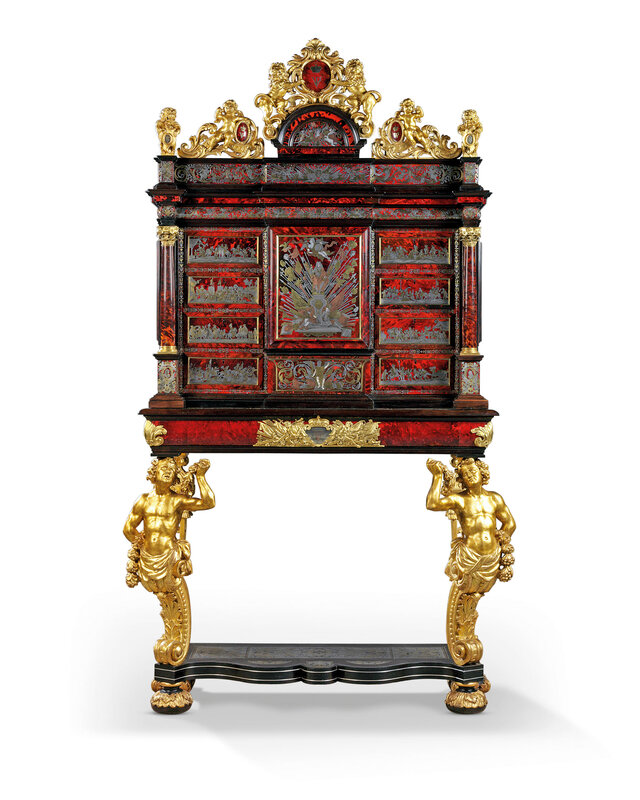


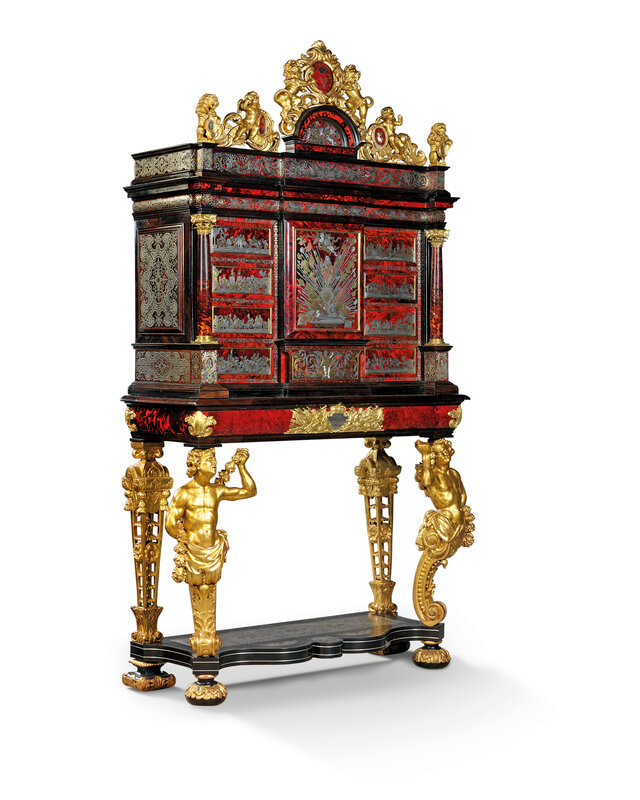







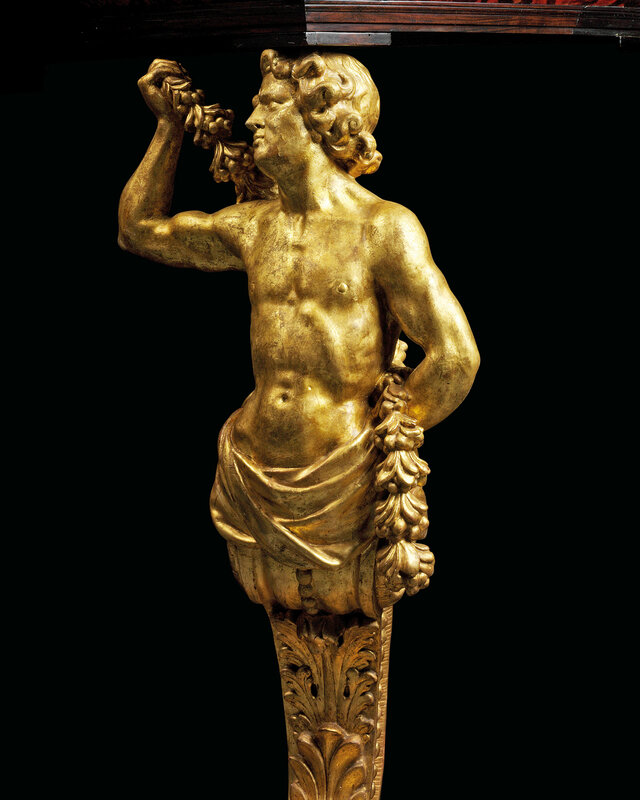

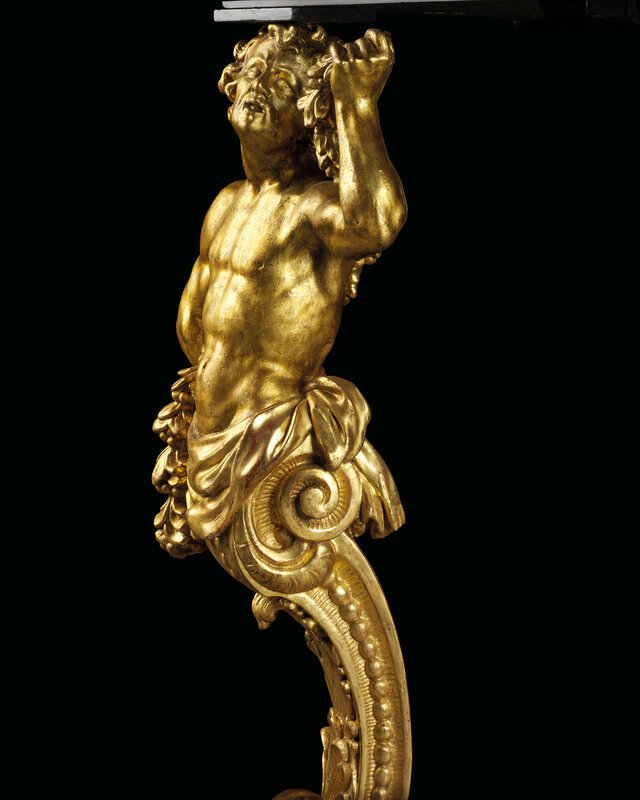




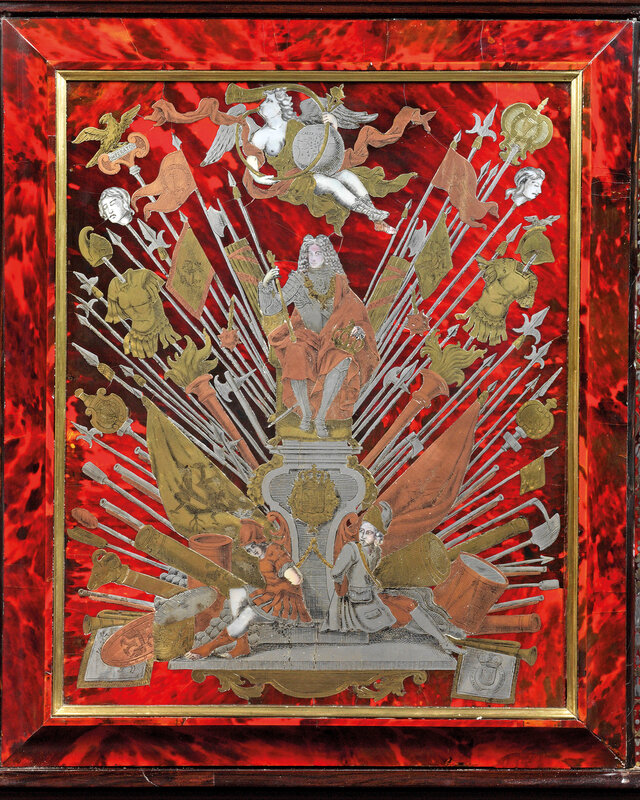








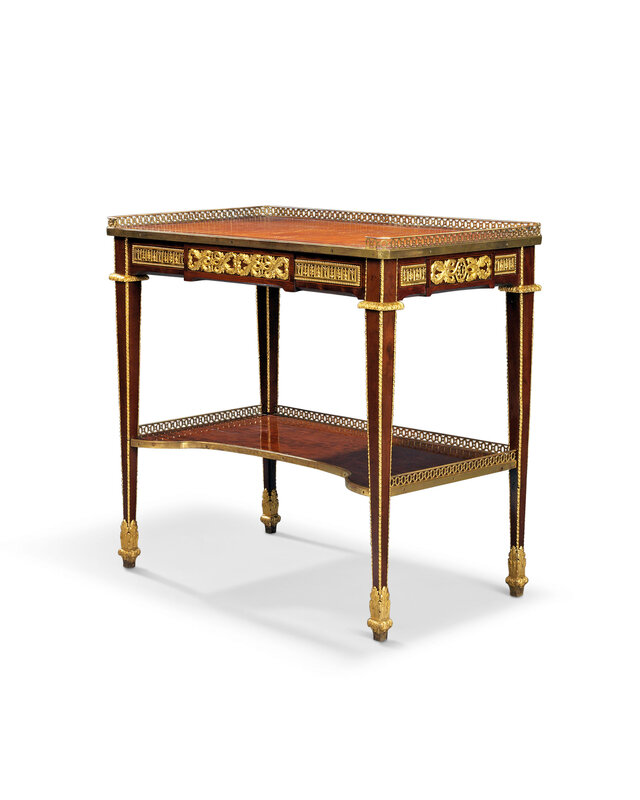
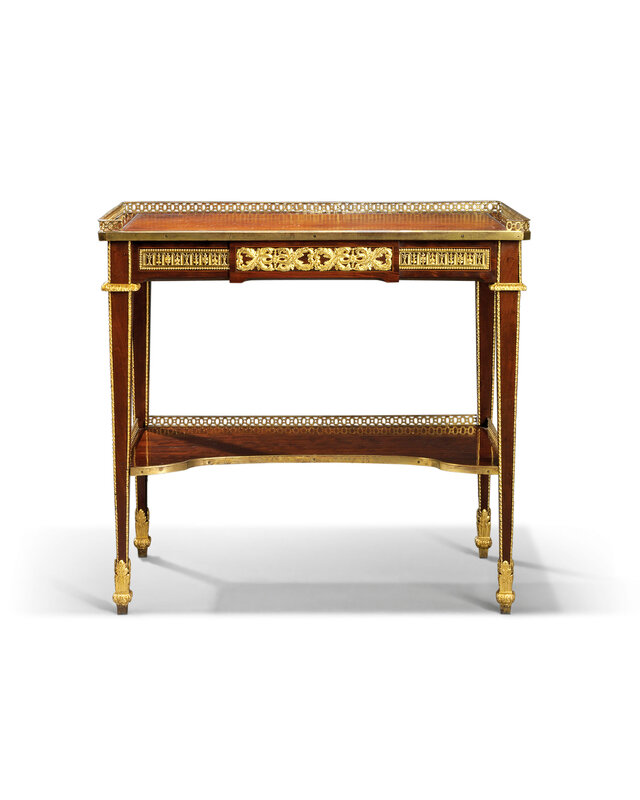

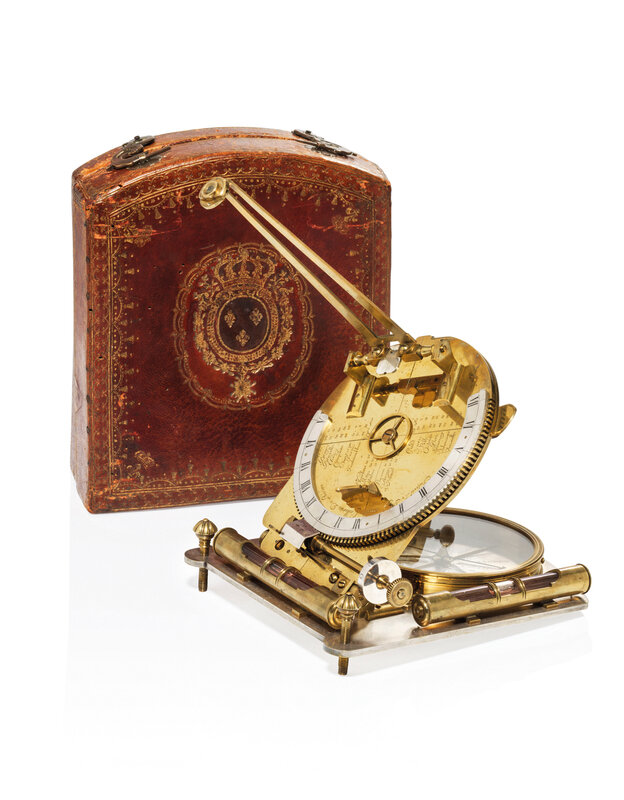




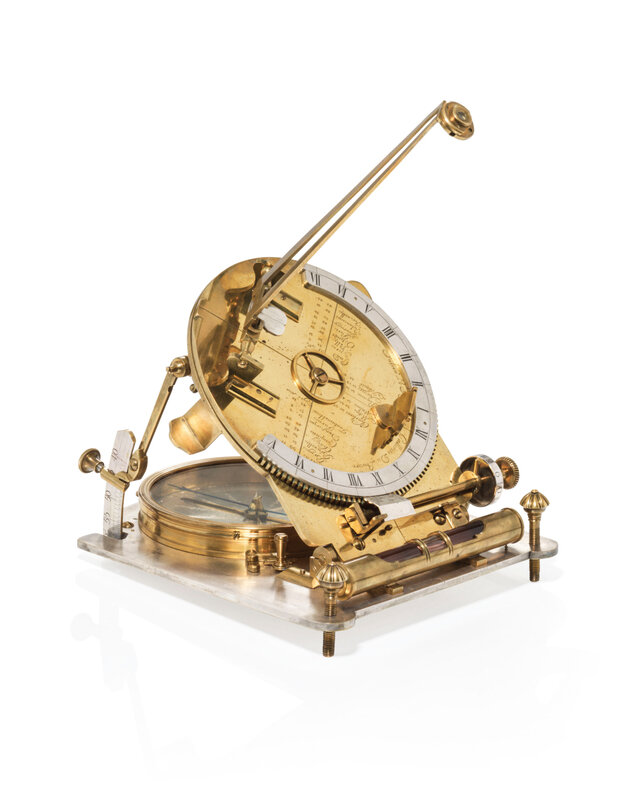




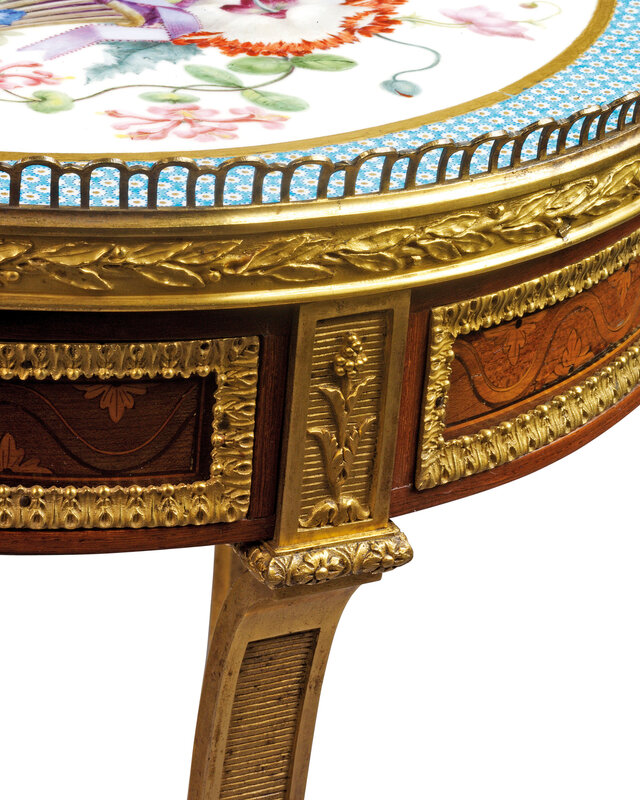
















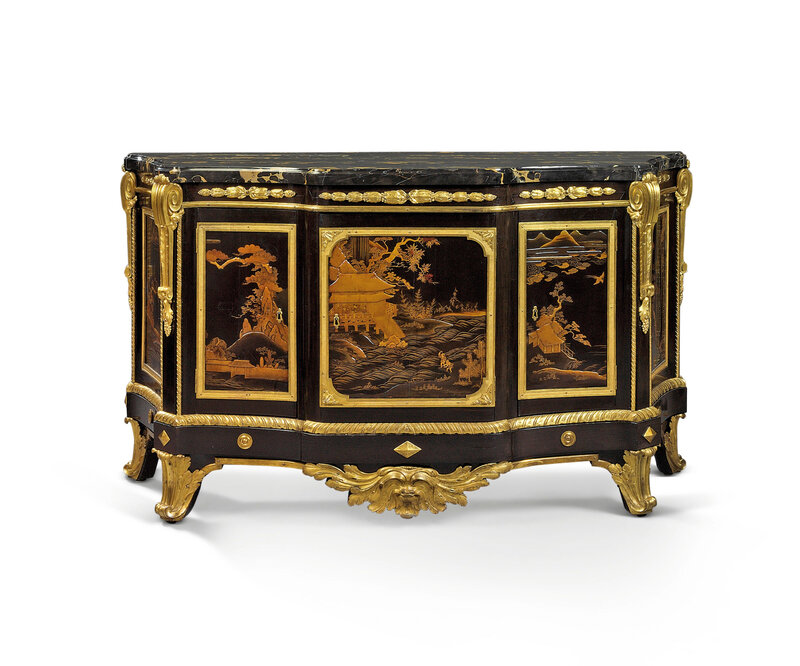
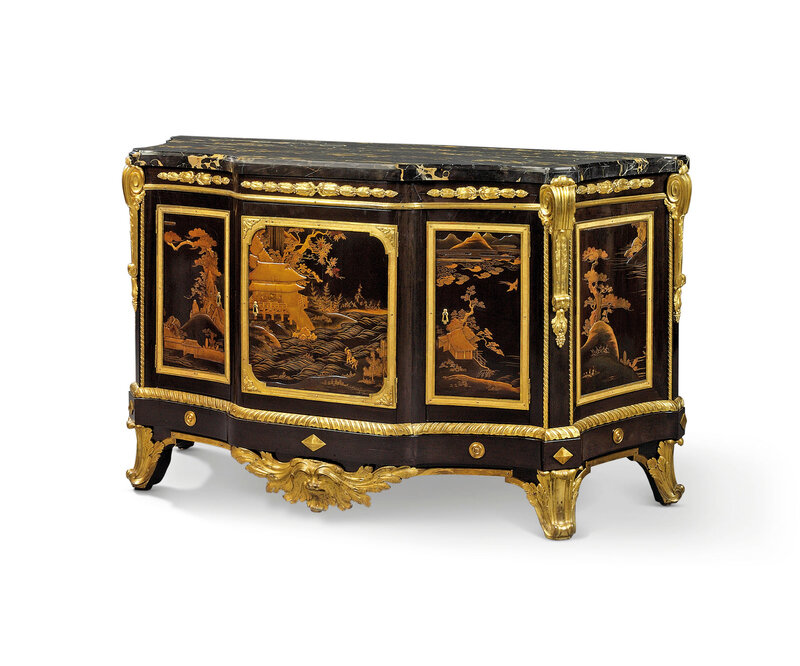
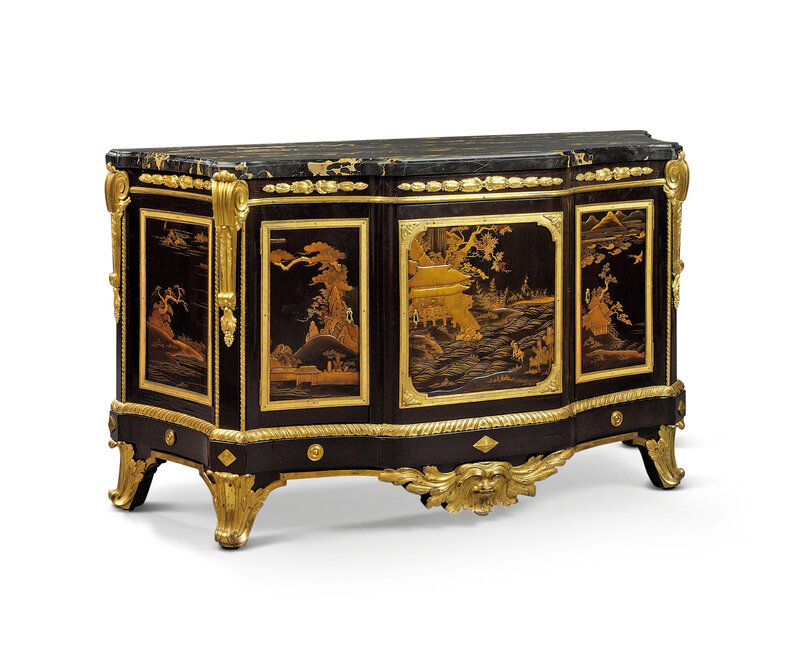

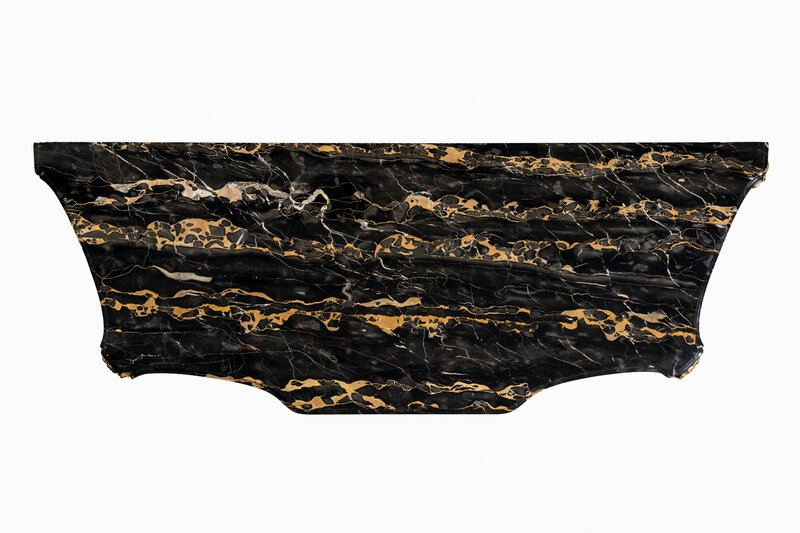

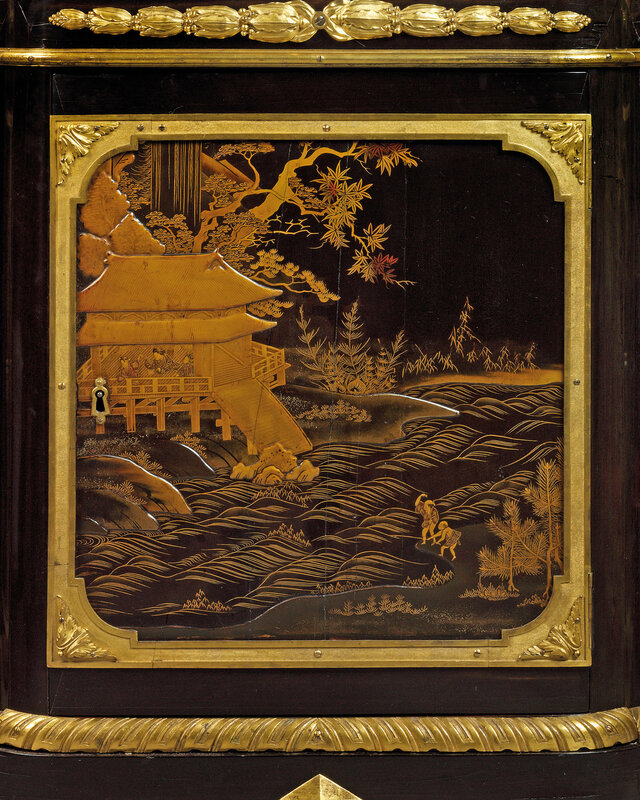
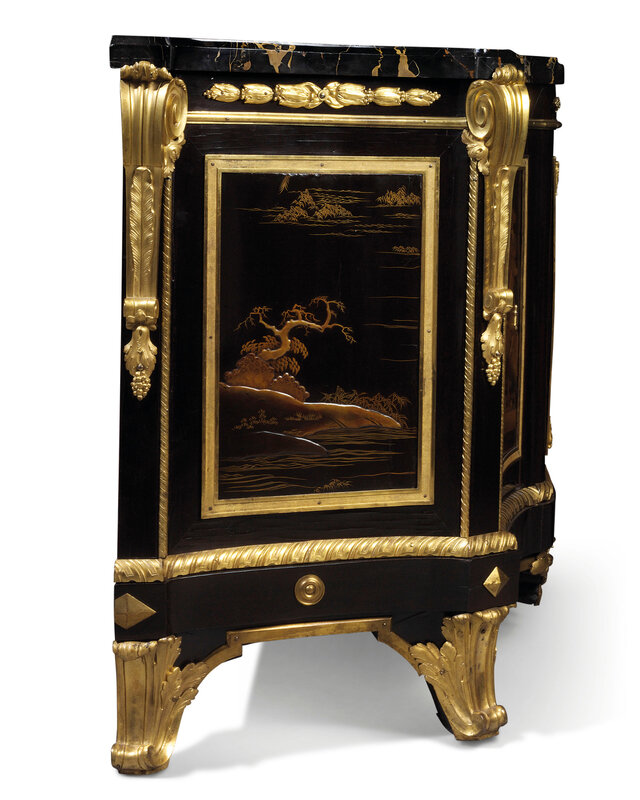


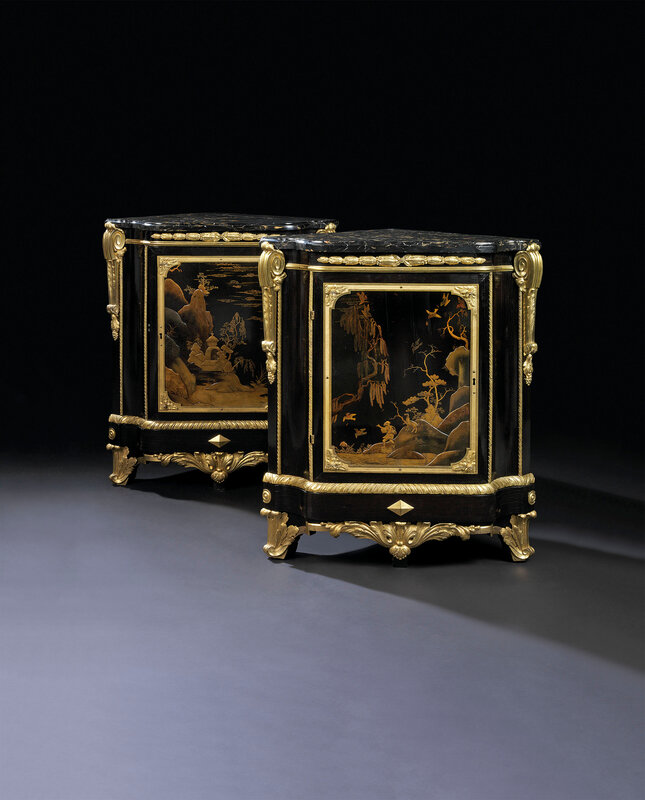













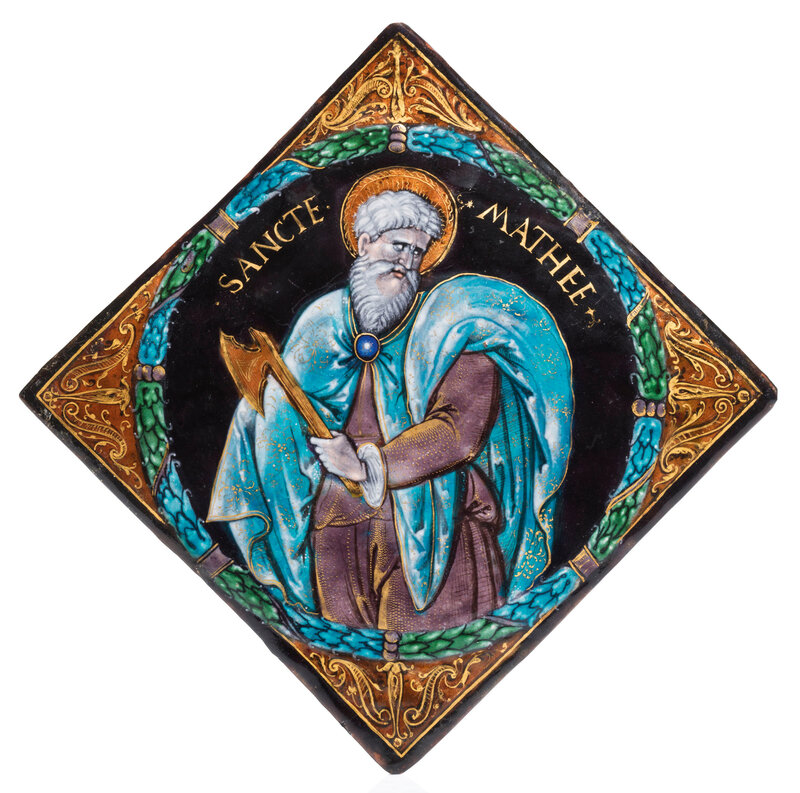

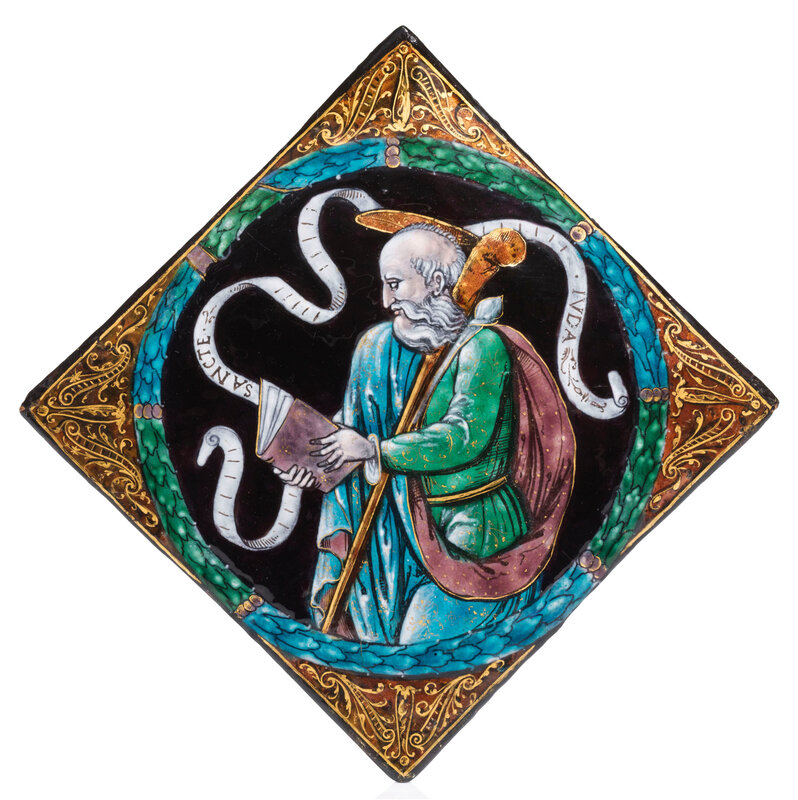




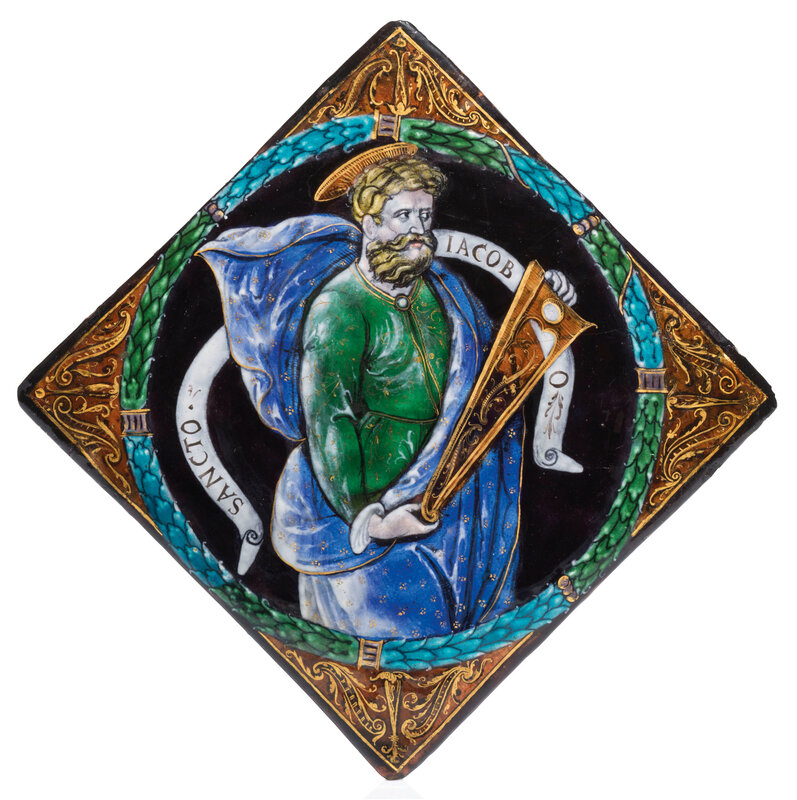

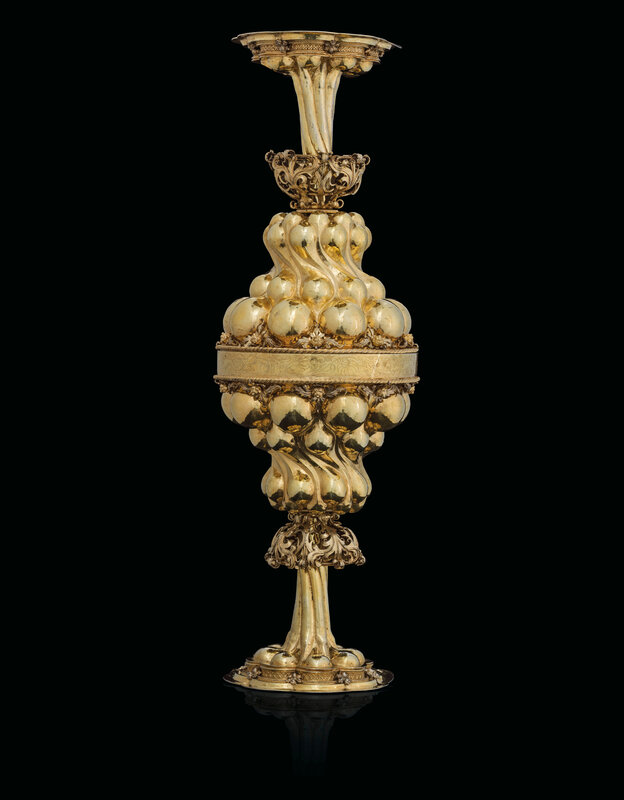



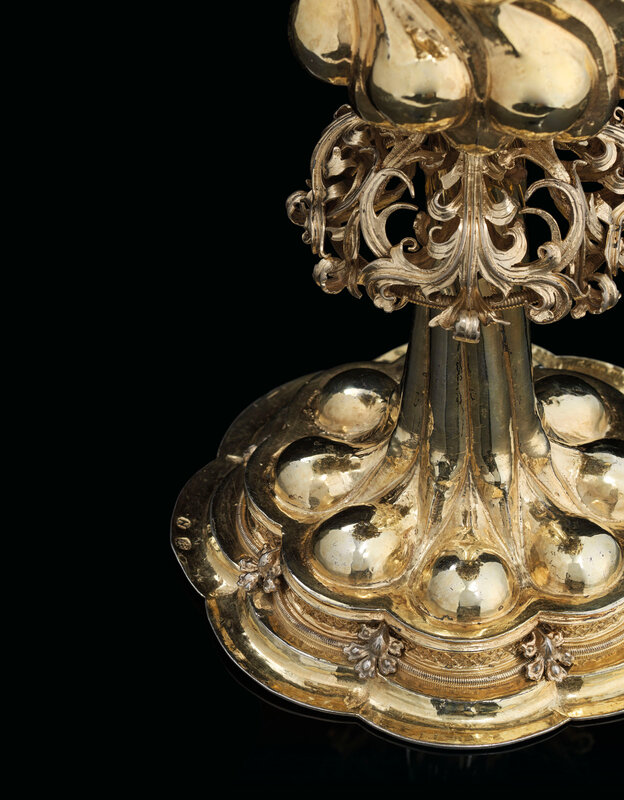

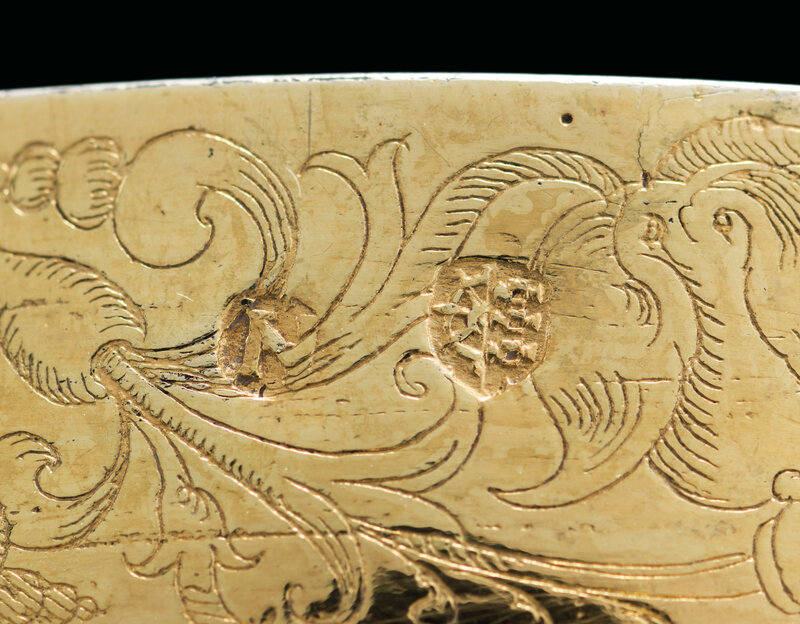


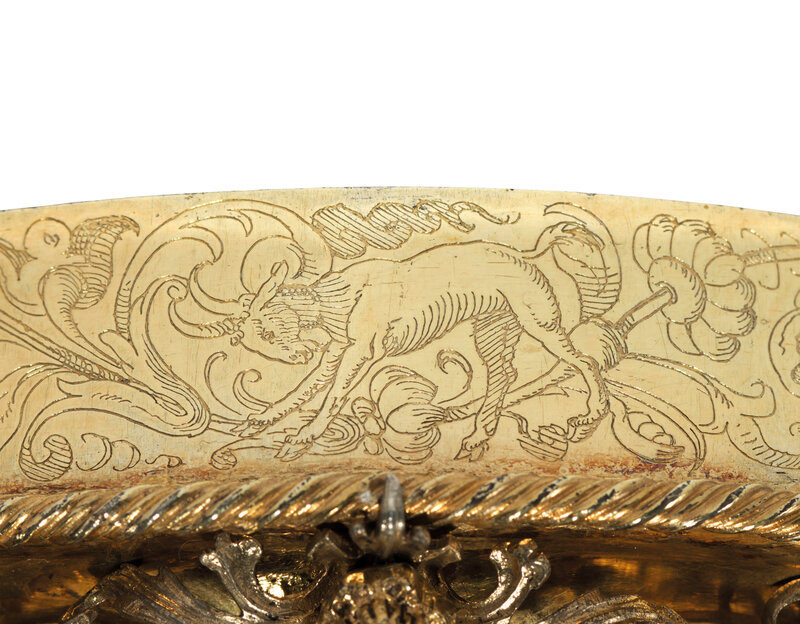
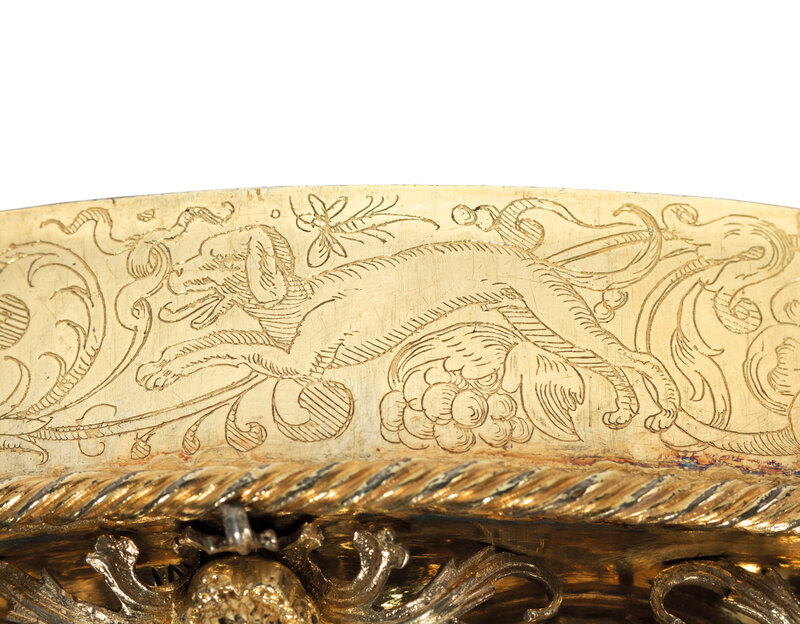





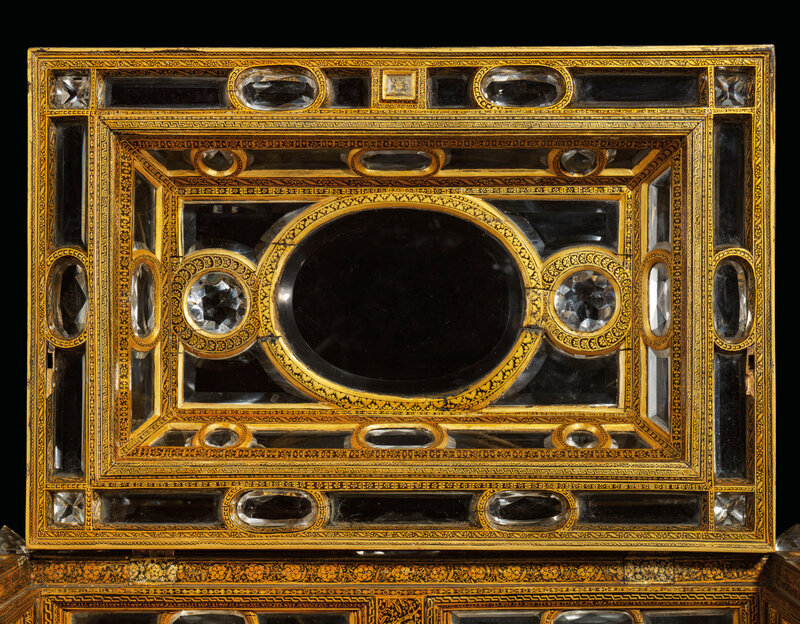


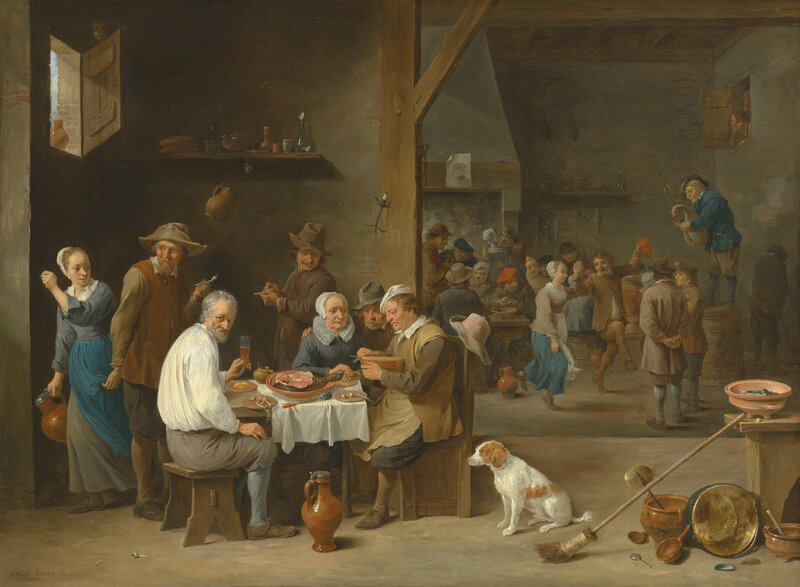






/http%3A%2F%2Fstorage.canalblog.com%2F26%2F22%2F119589%2F122502543_o.jpg)
/http%3A%2F%2Fstorage.canalblog.com%2F47%2F89%2F119589%2F111661507_o.jpg)
/http%3A%2F%2Fstorage.canalblog.com%2F33%2F98%2F119589%2F110283321_o.jpg)
/http%3A%2F%2Fstorage.canalblog.com%2F40%2F04%2F119589%2F110208329_o.jpg)